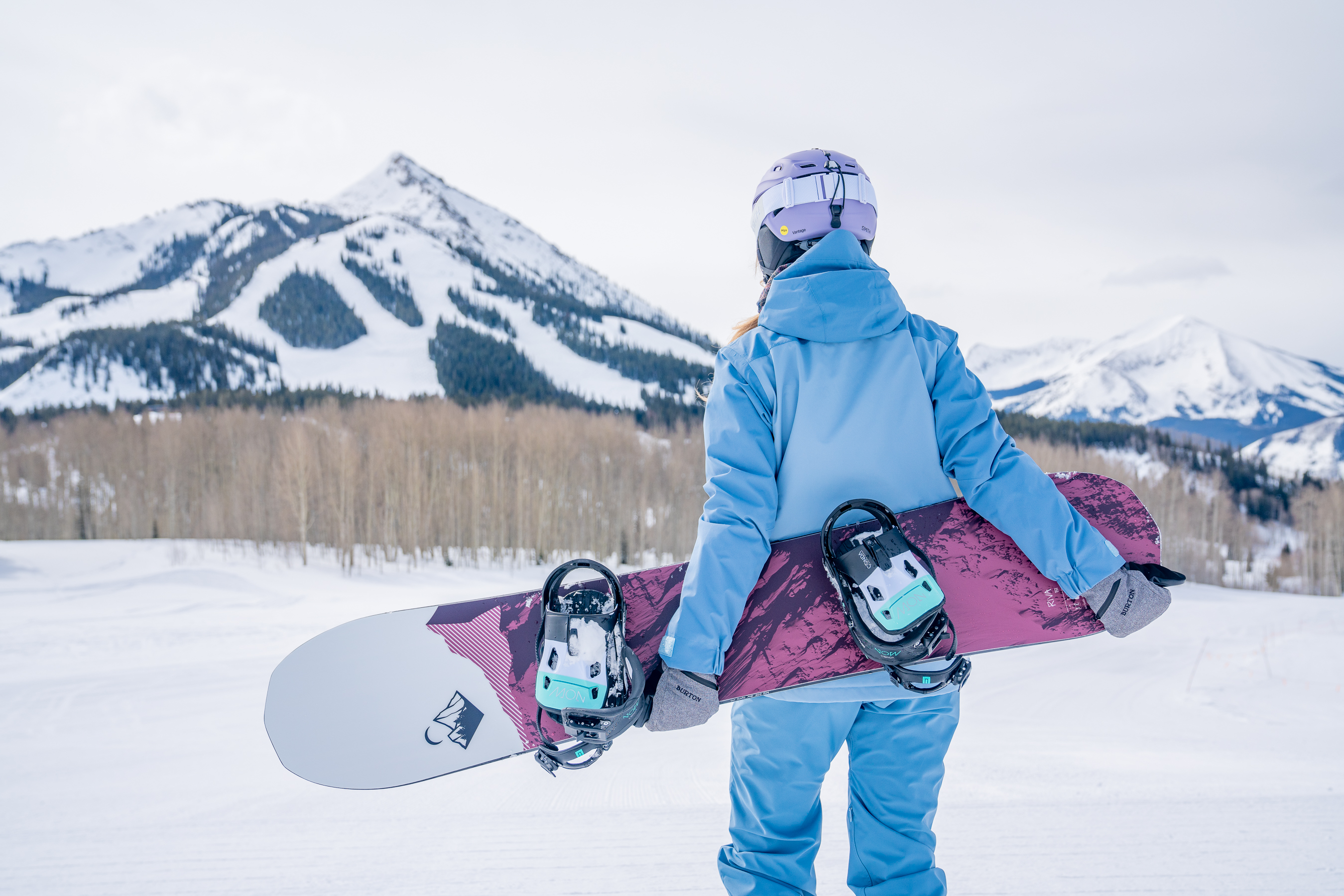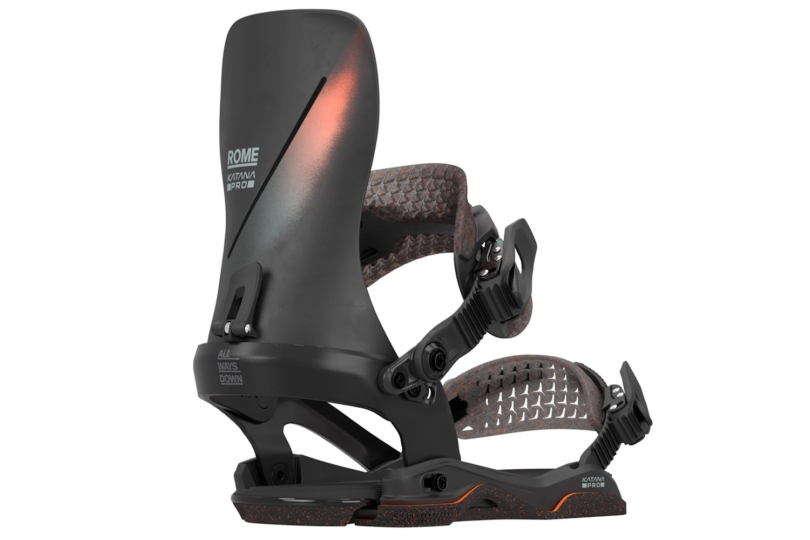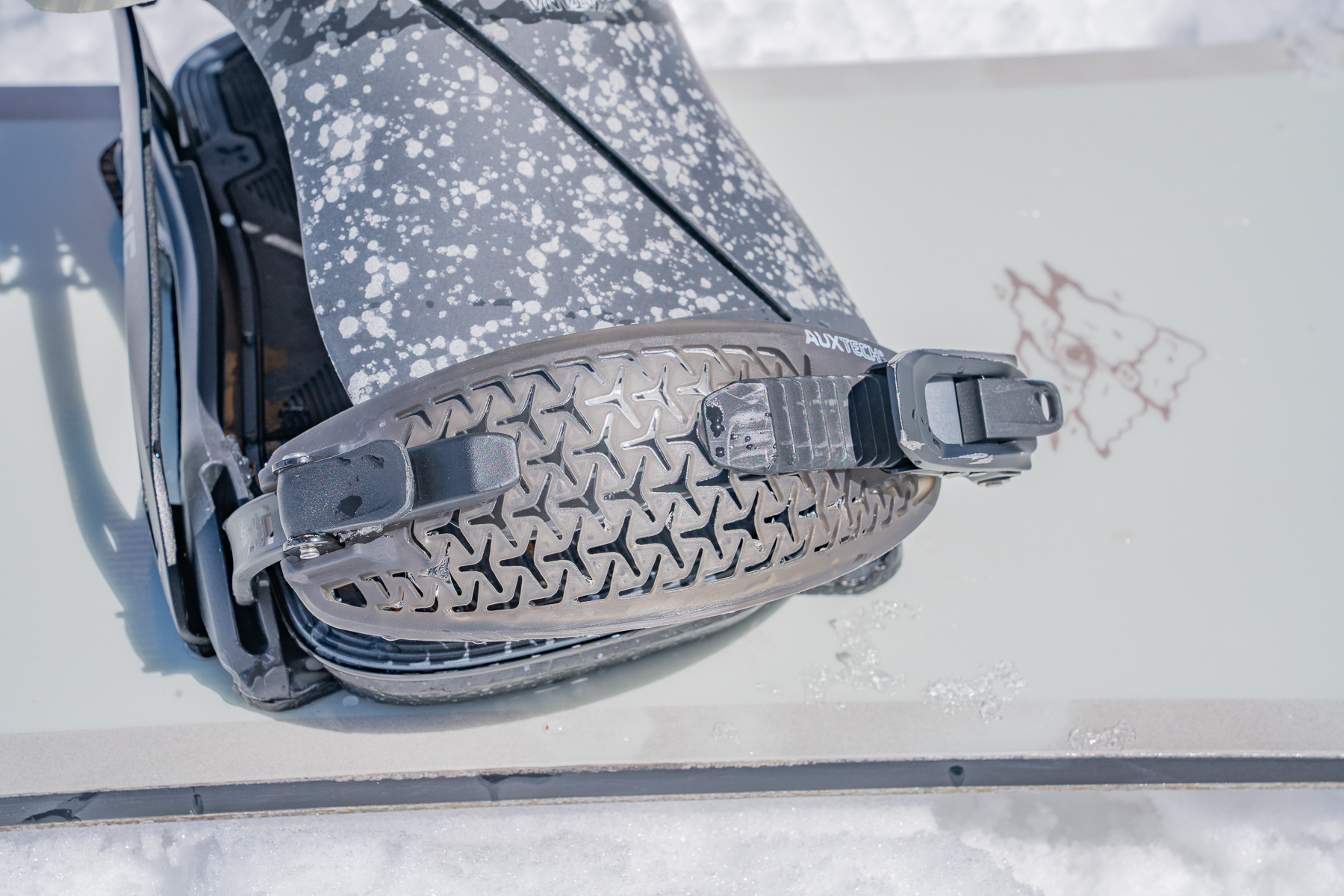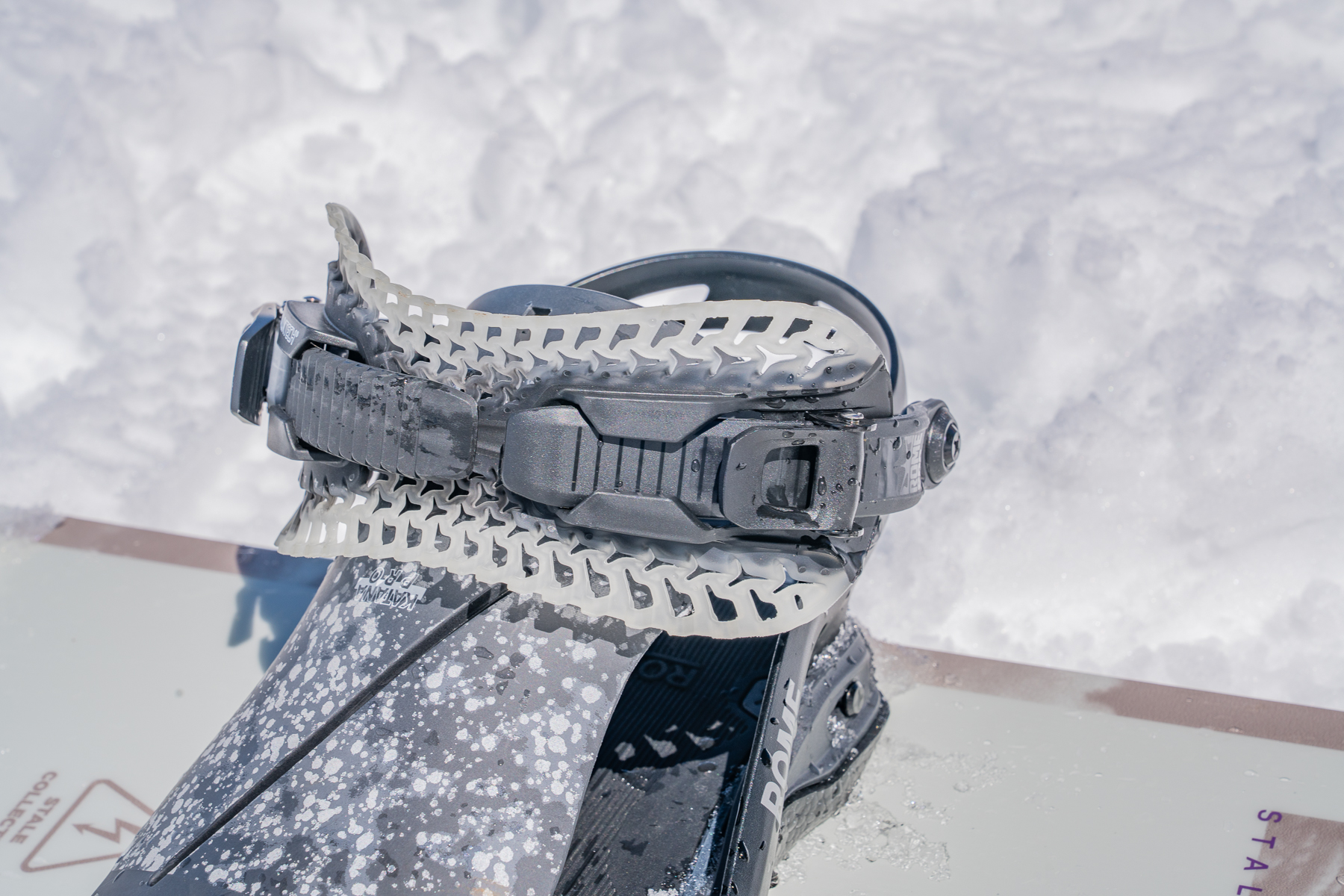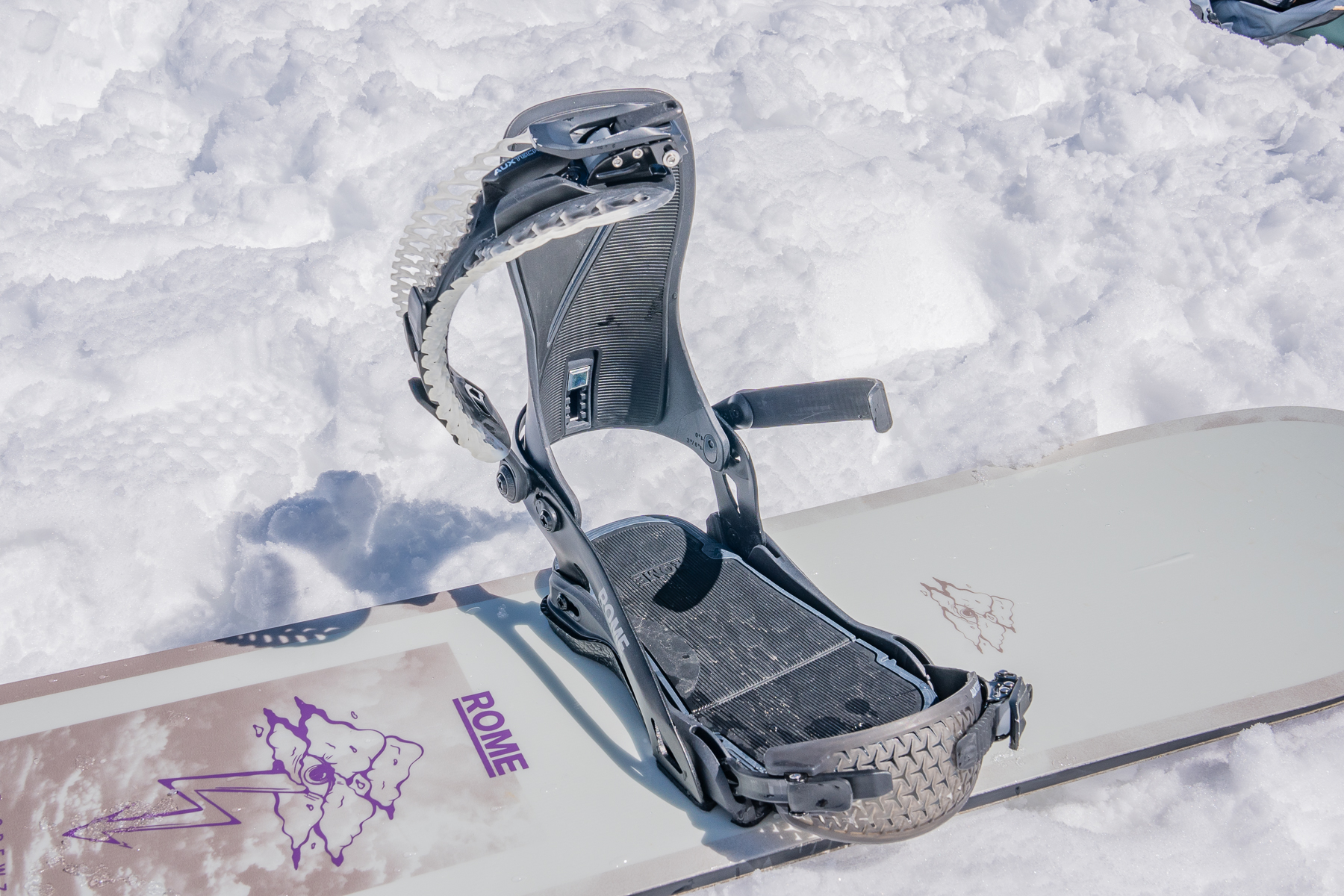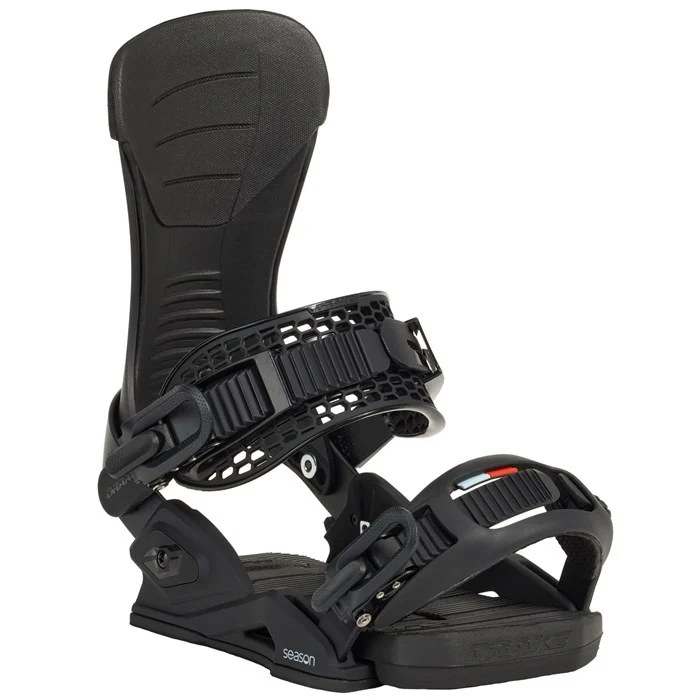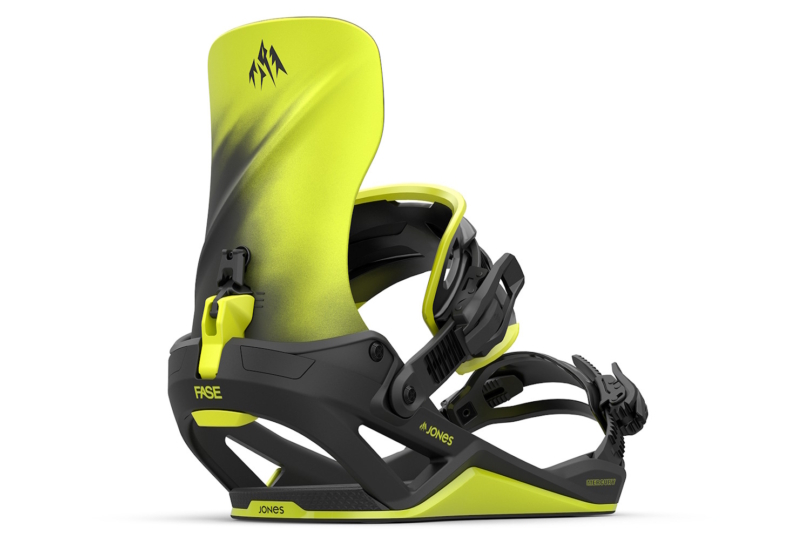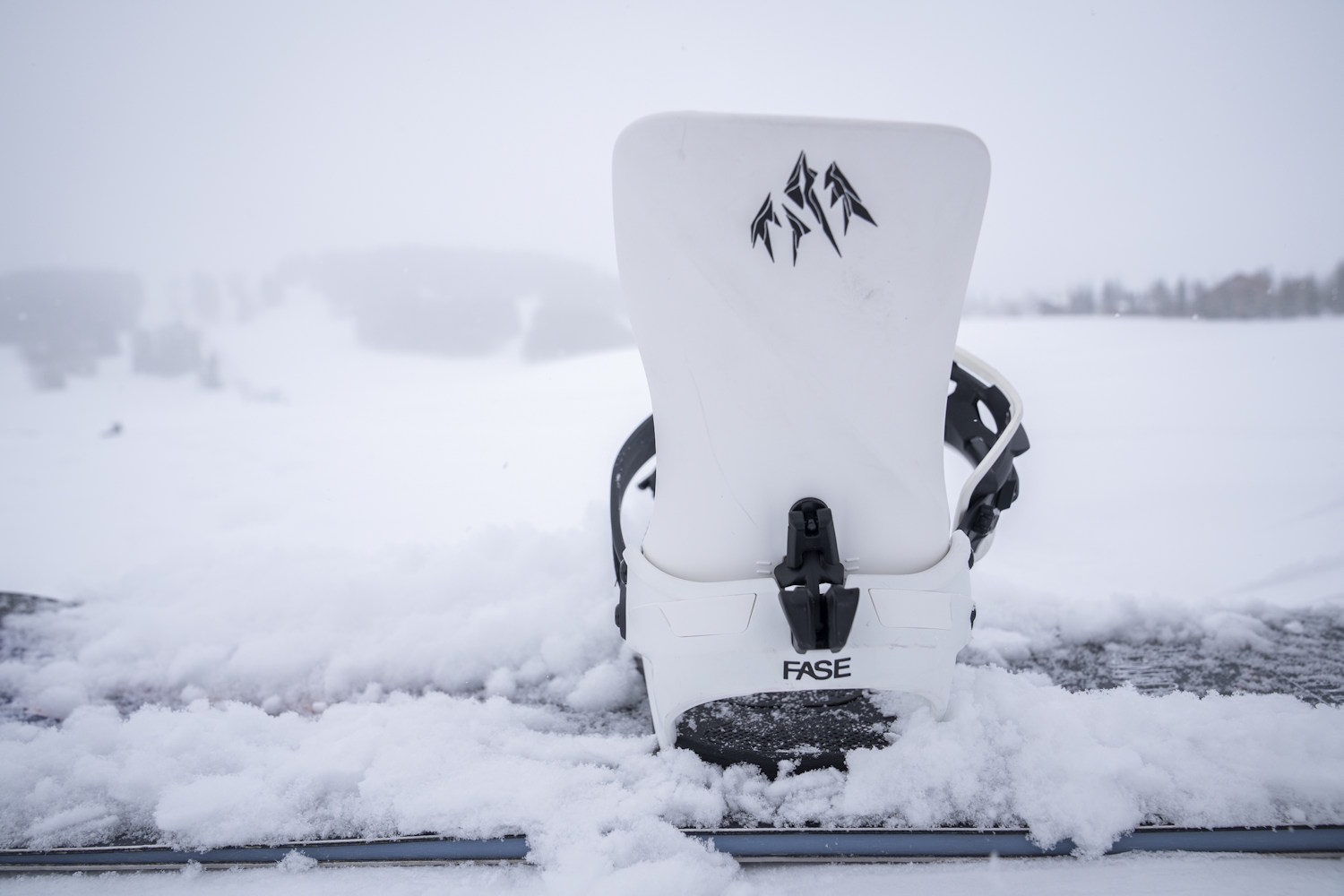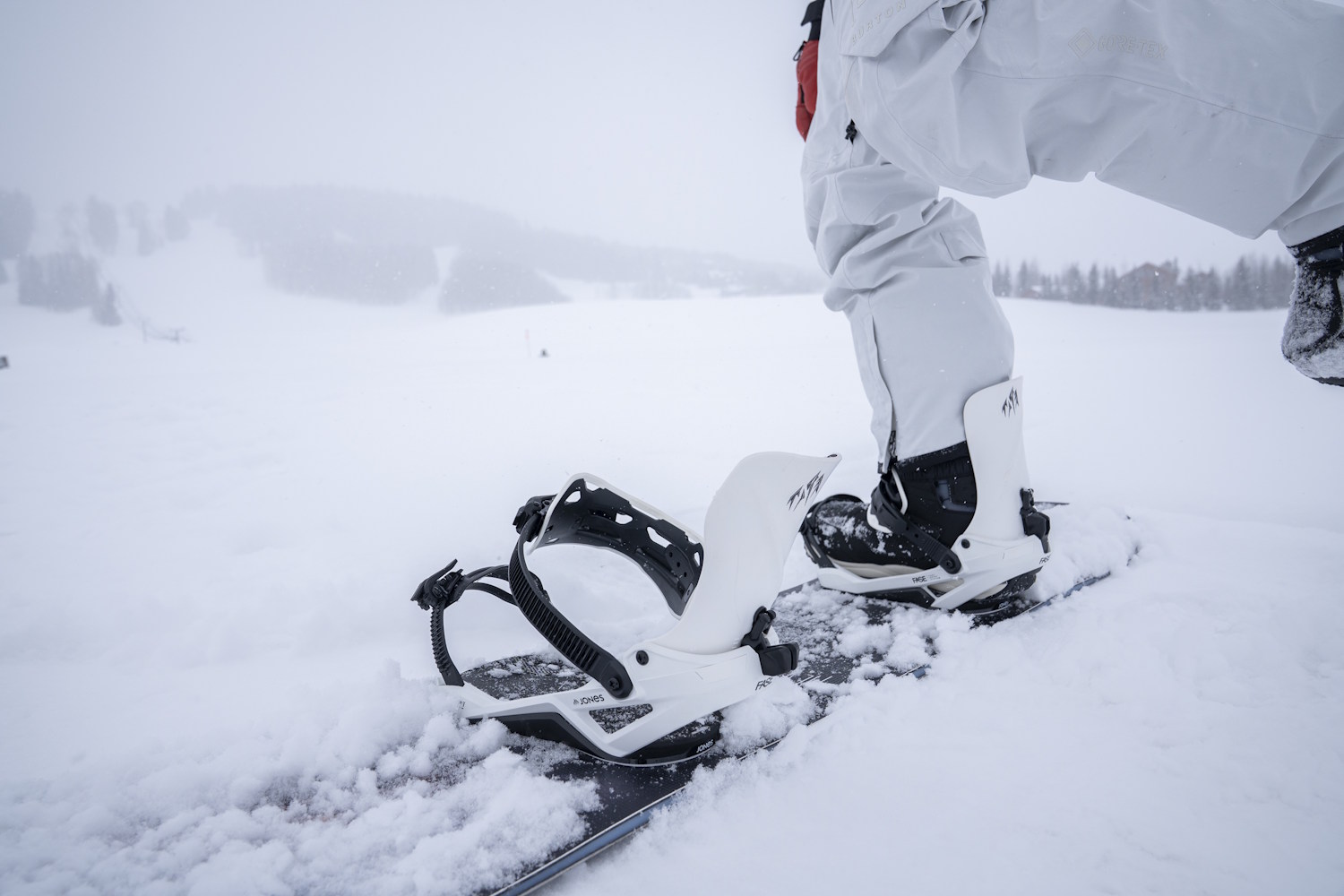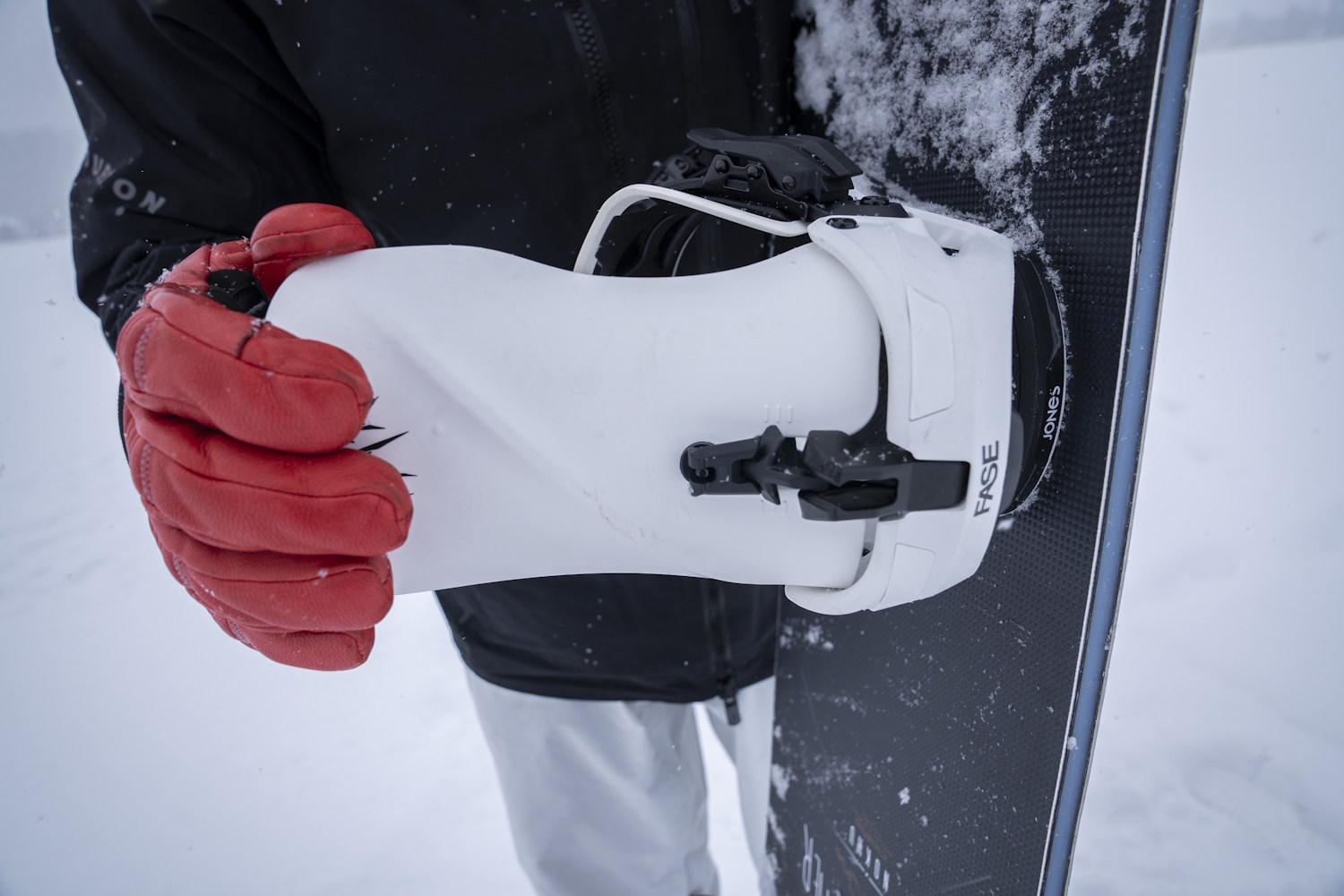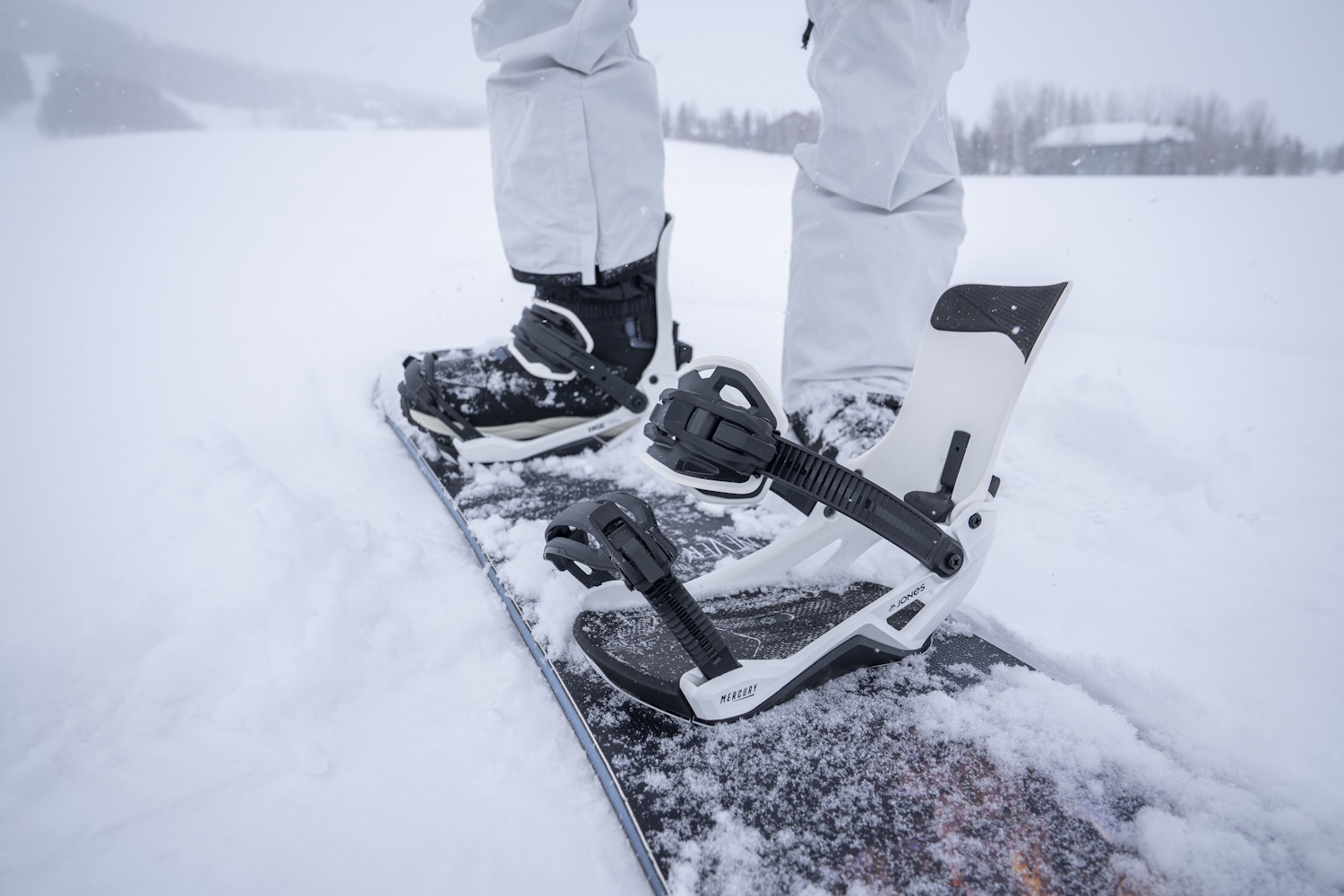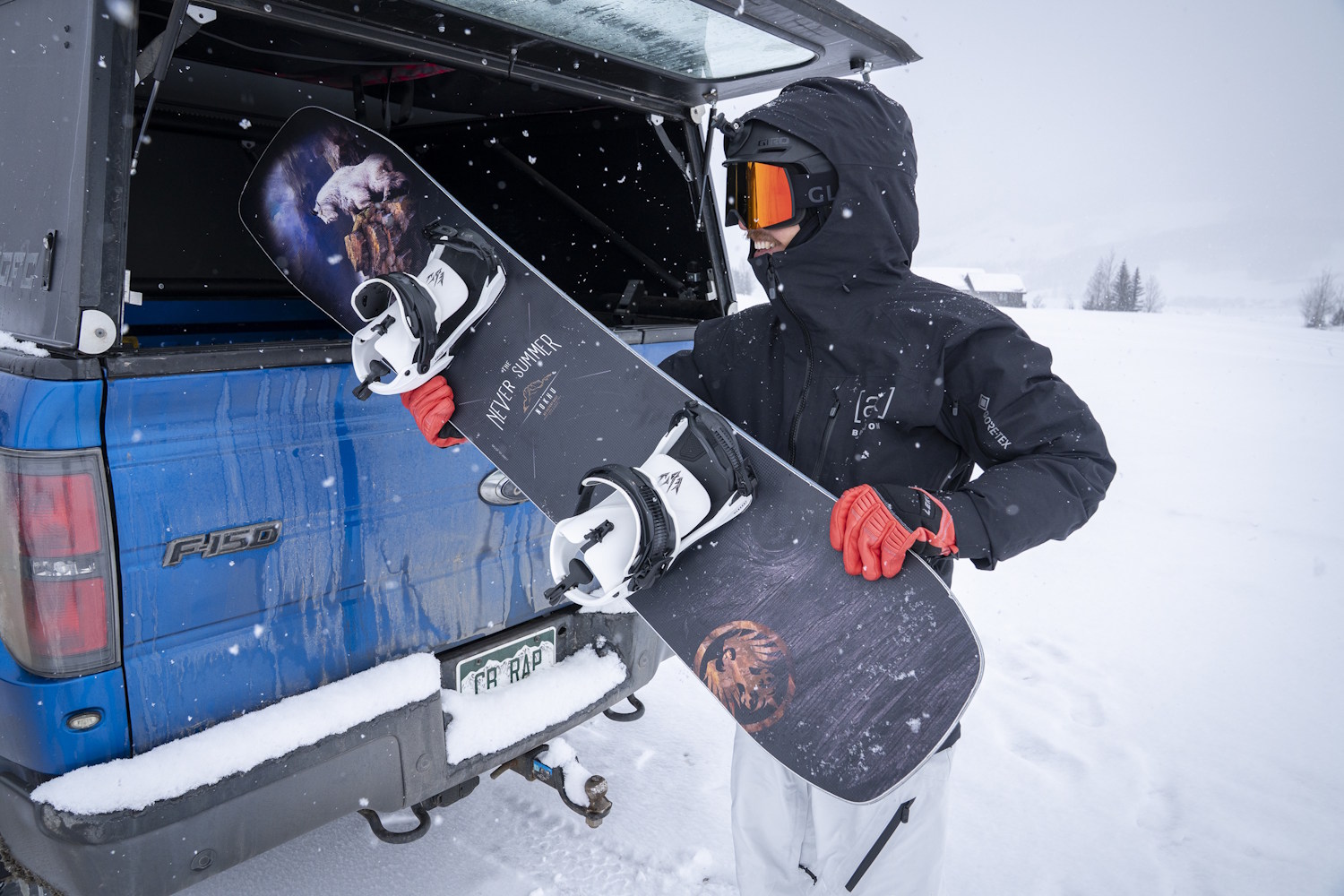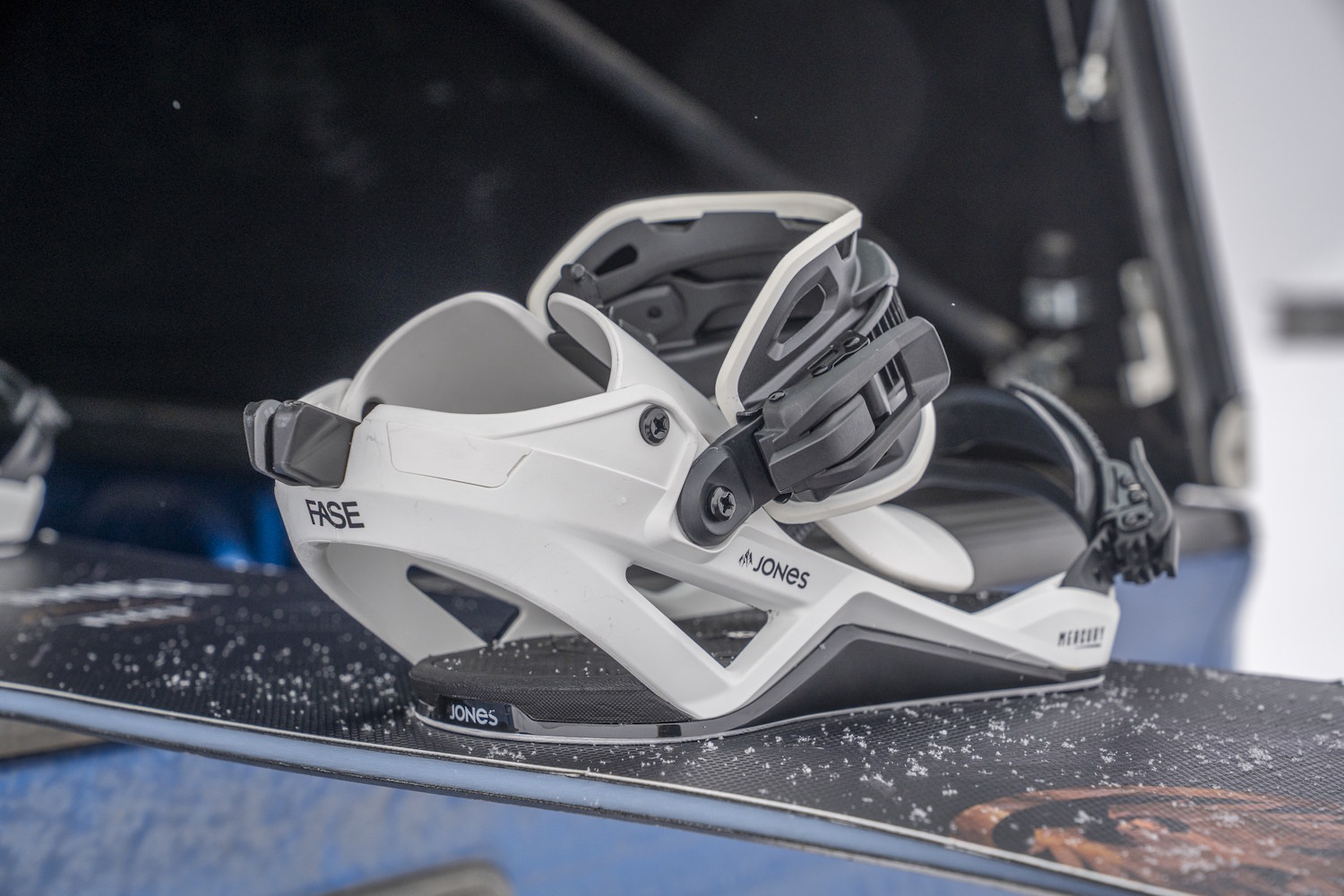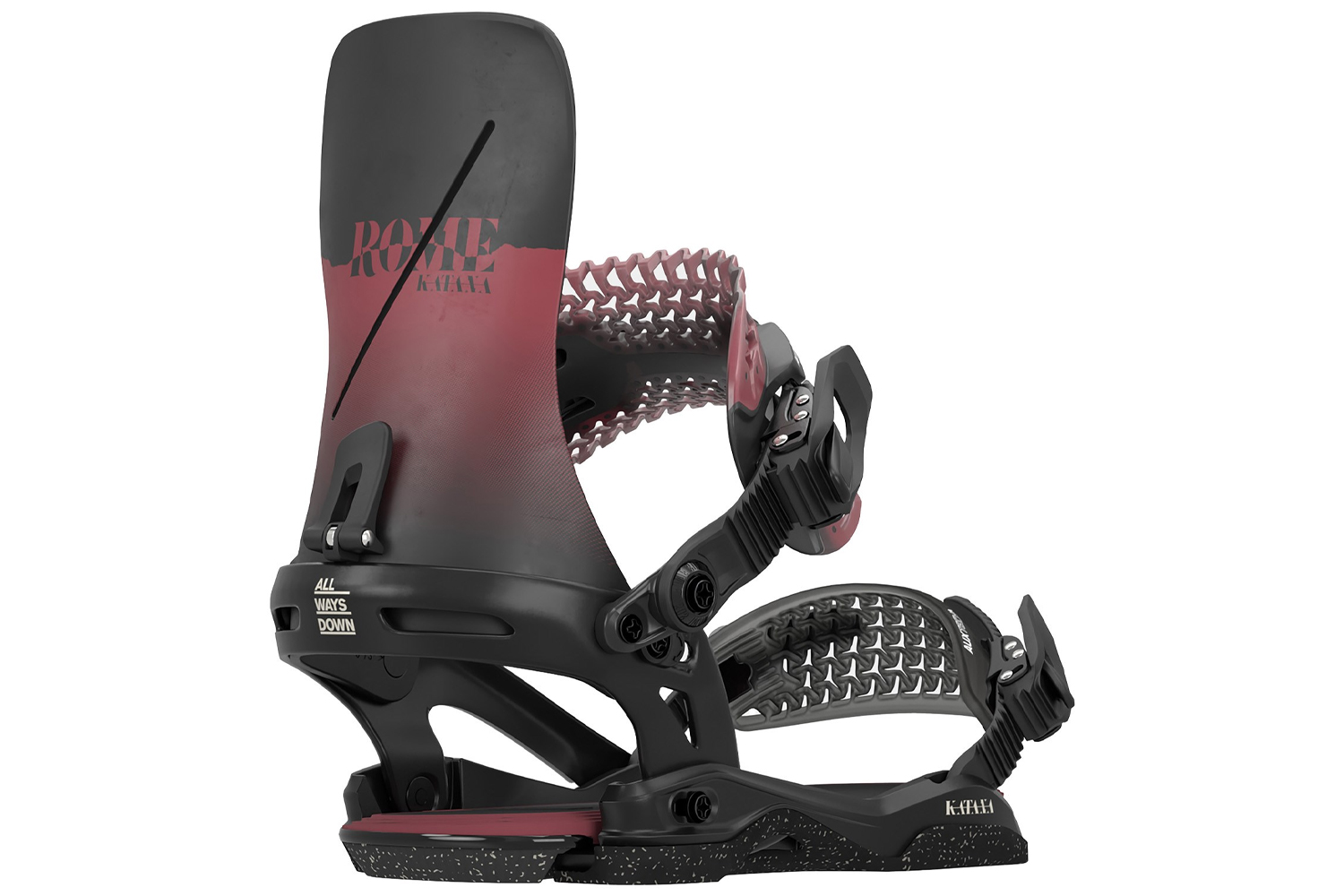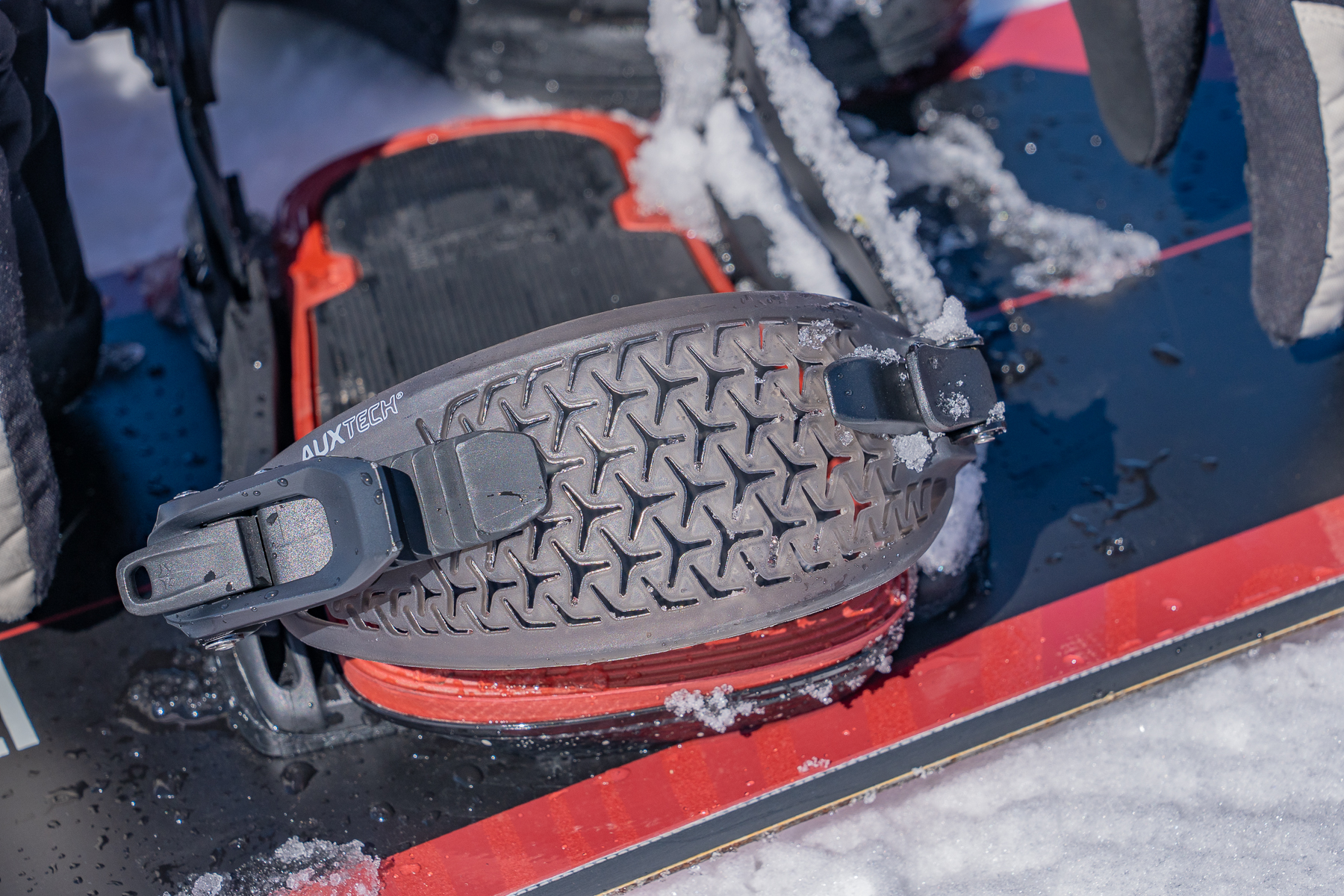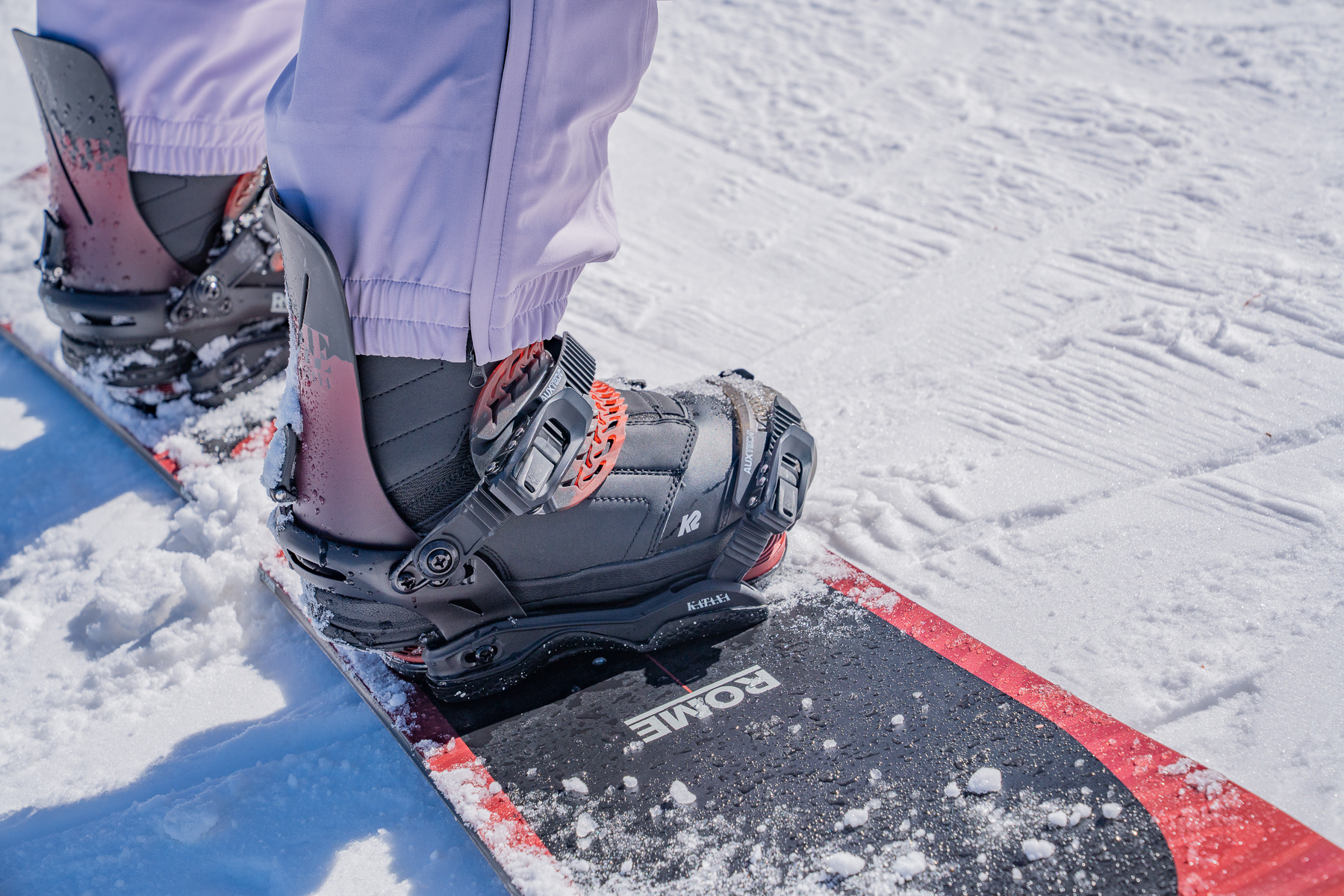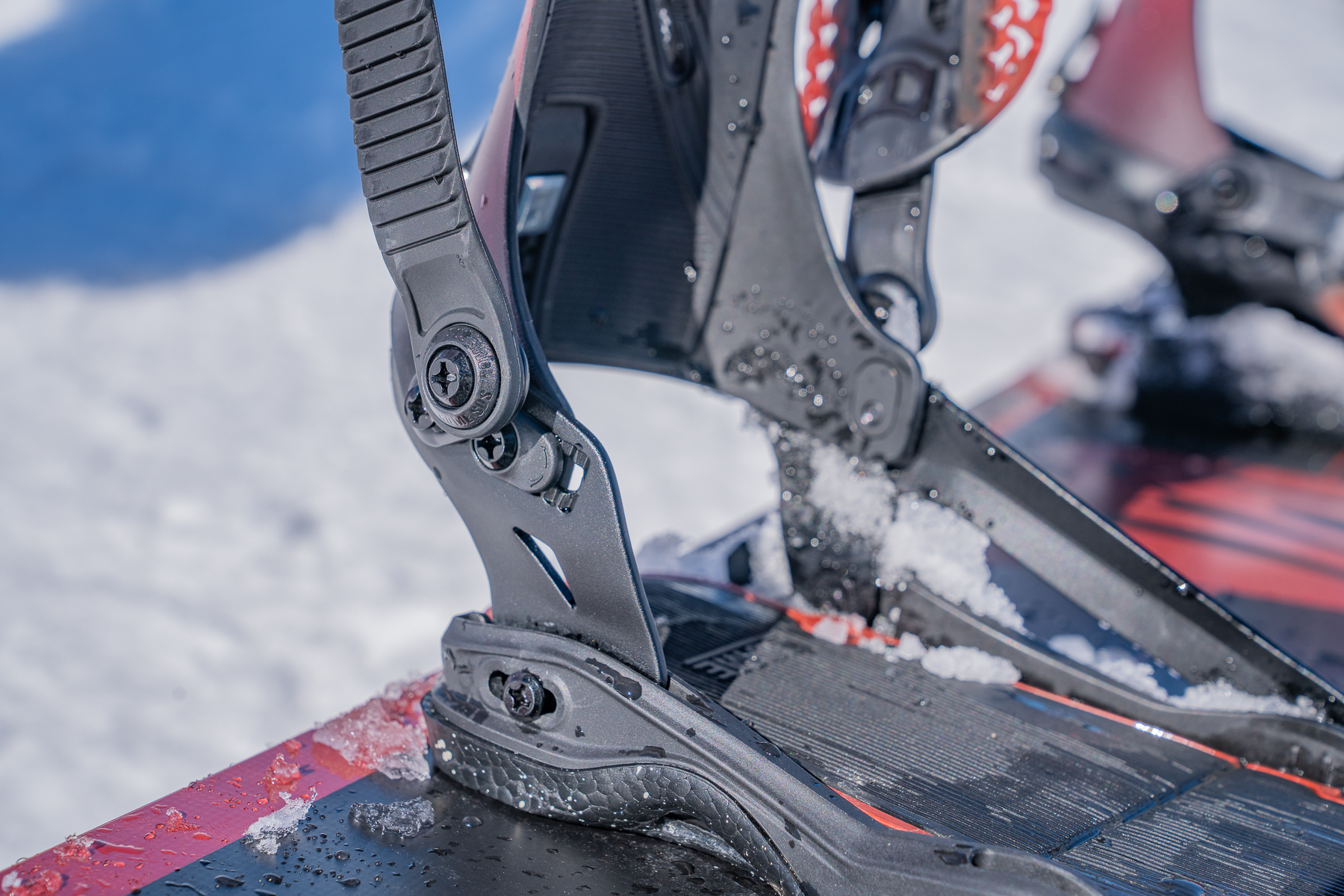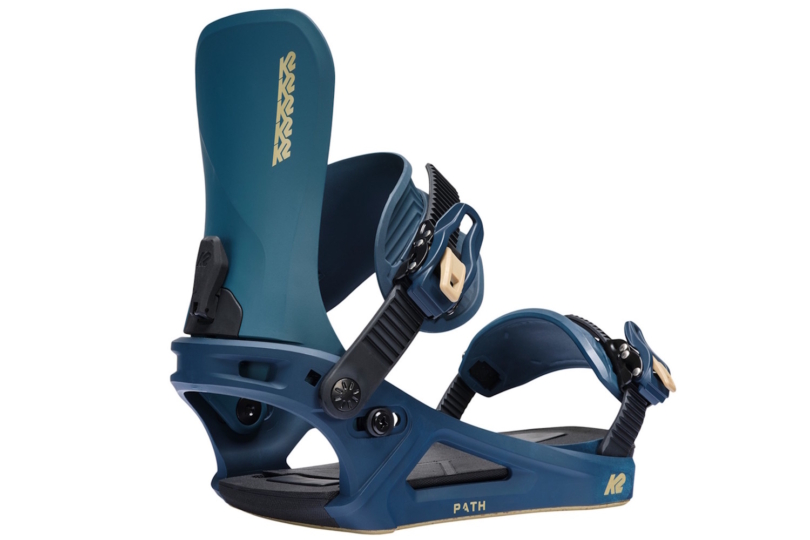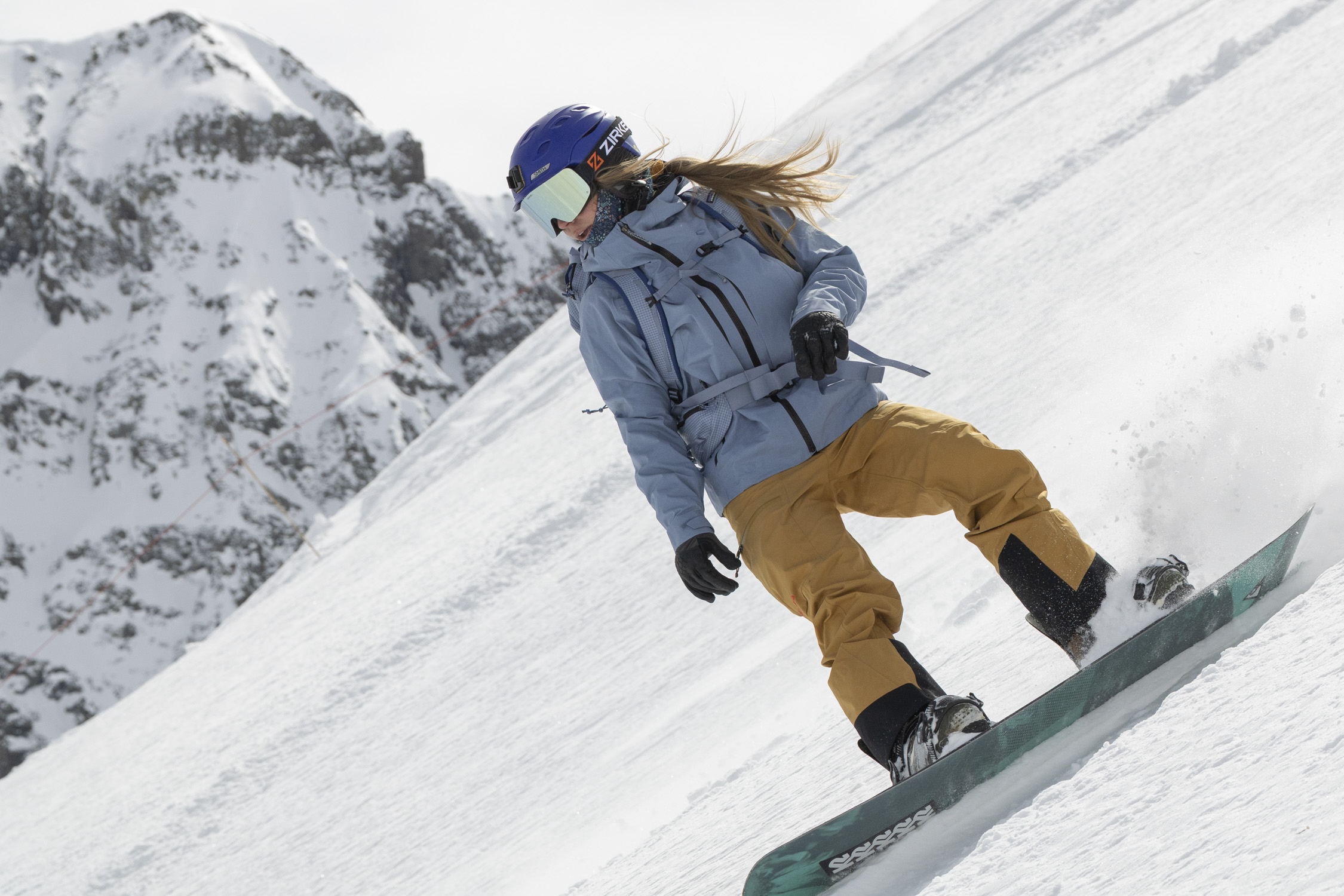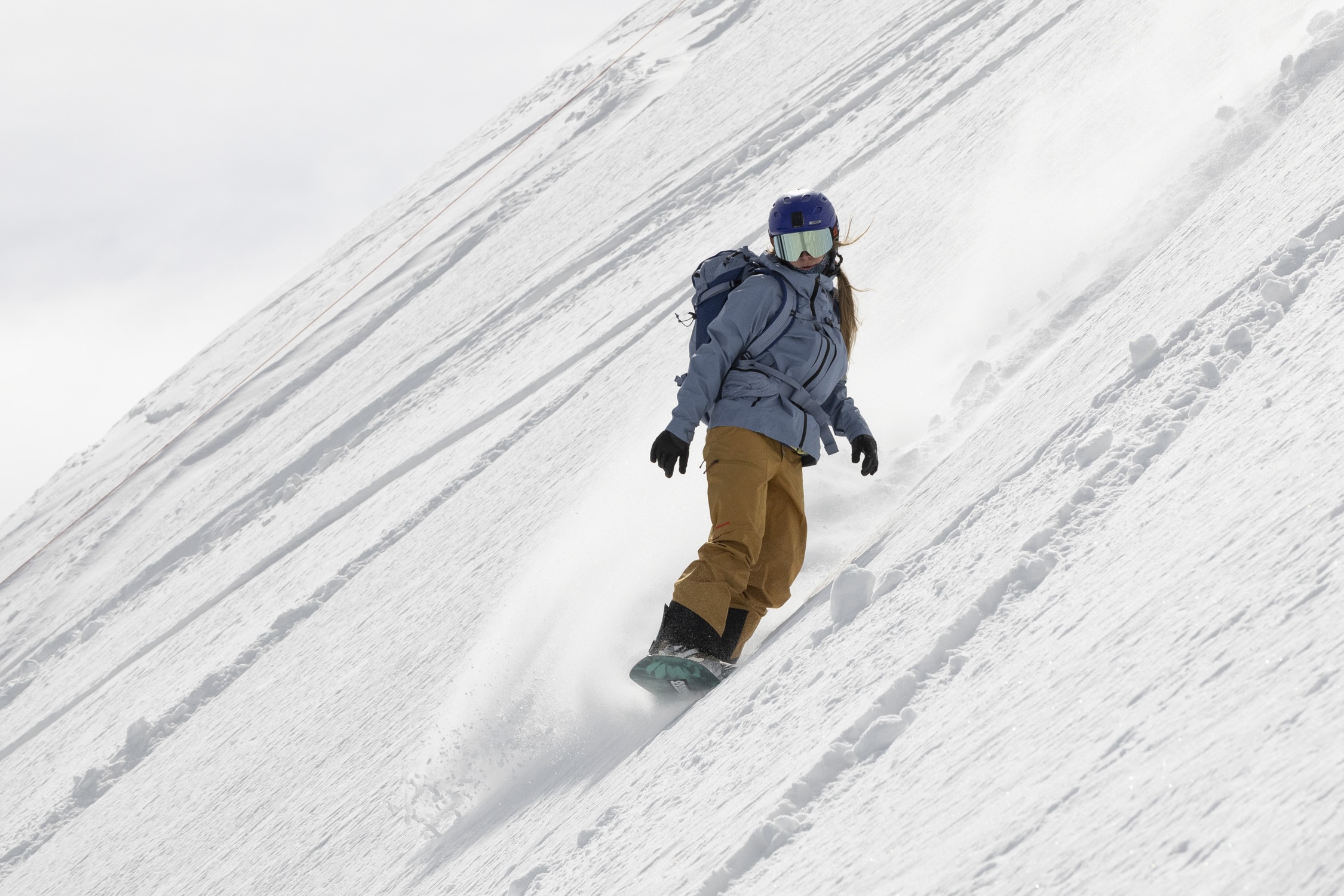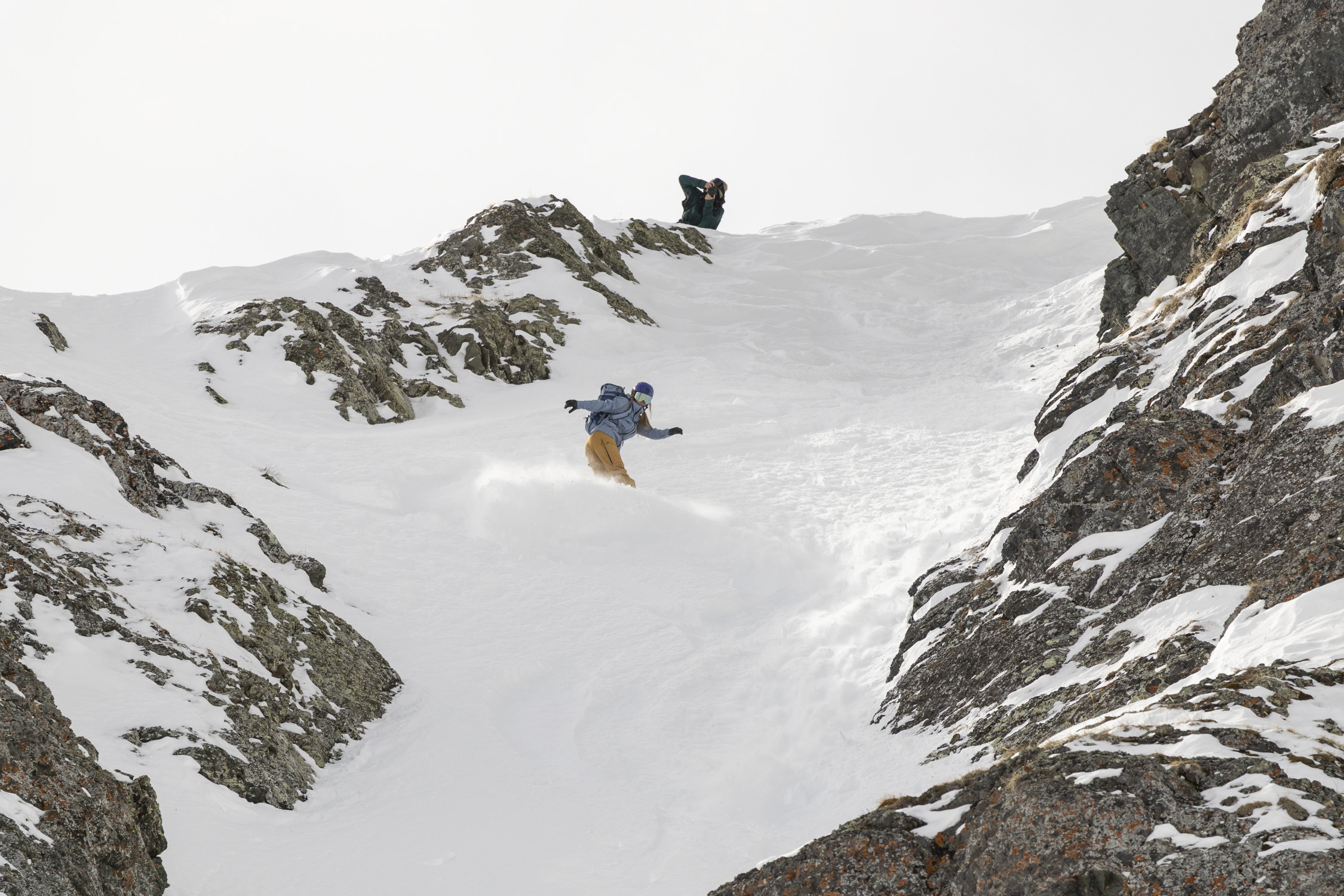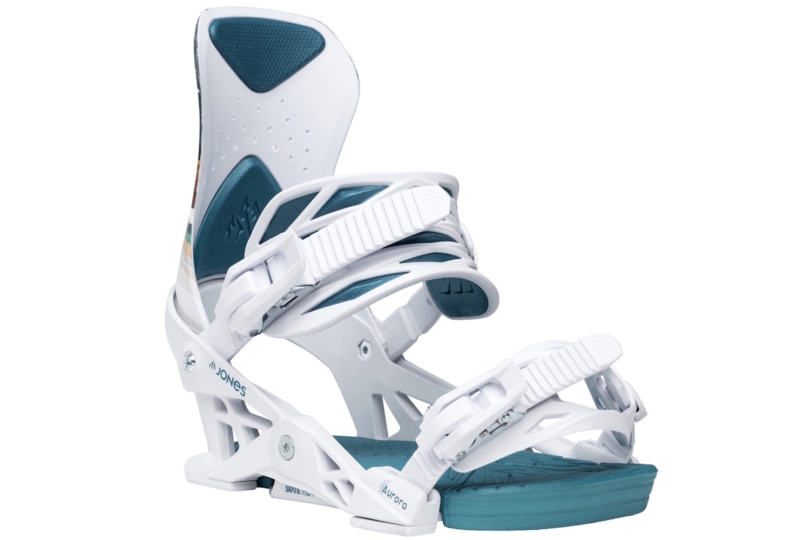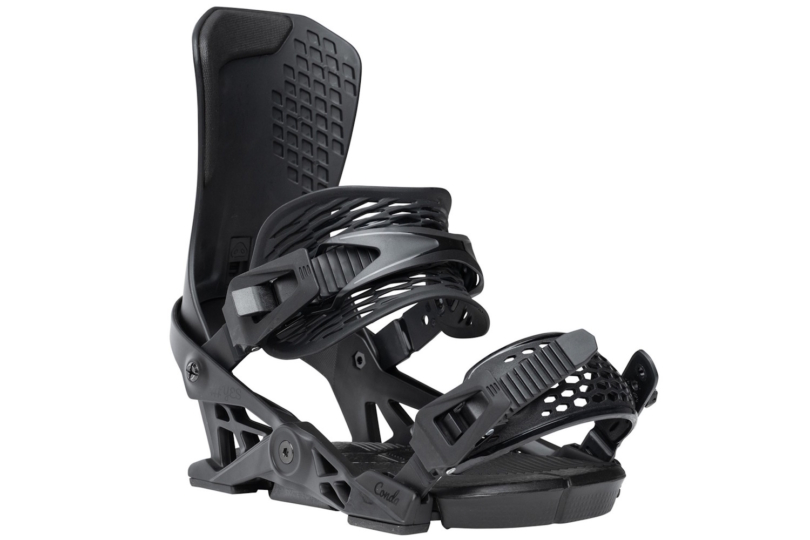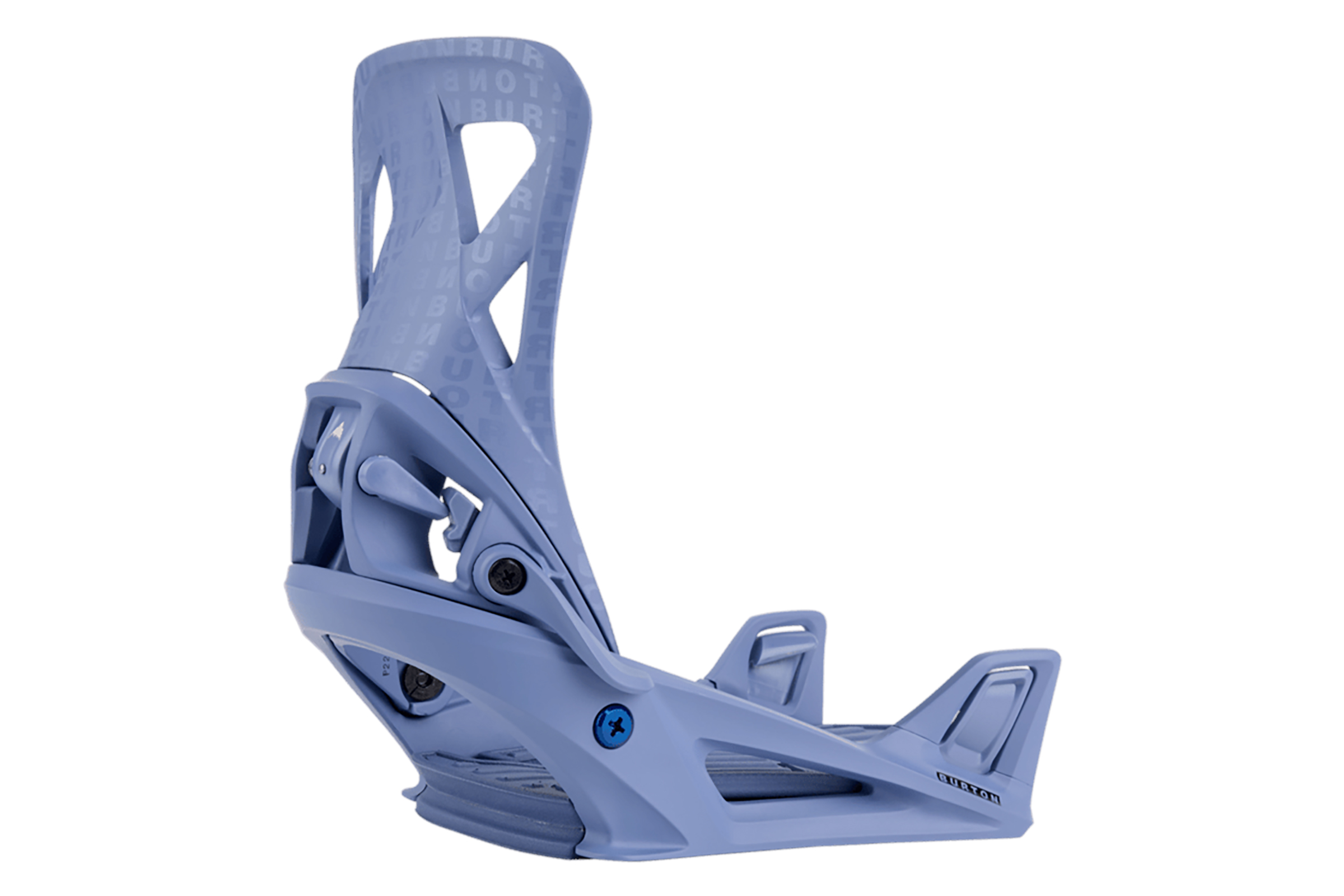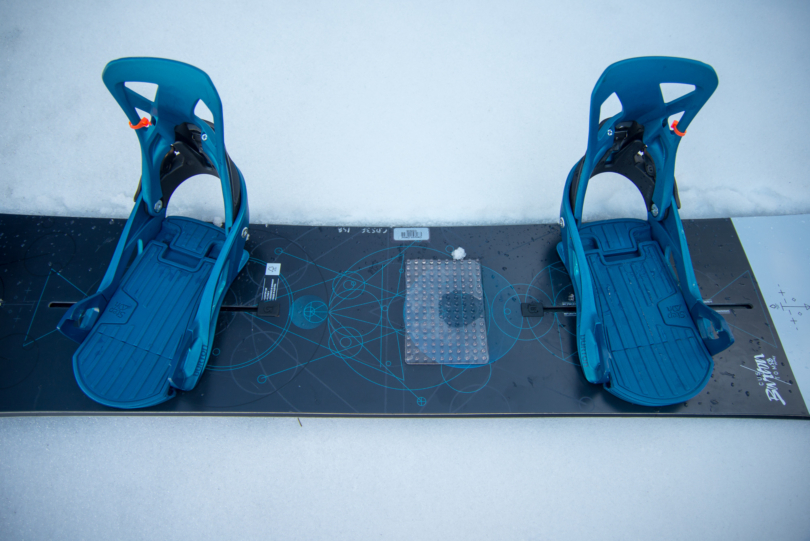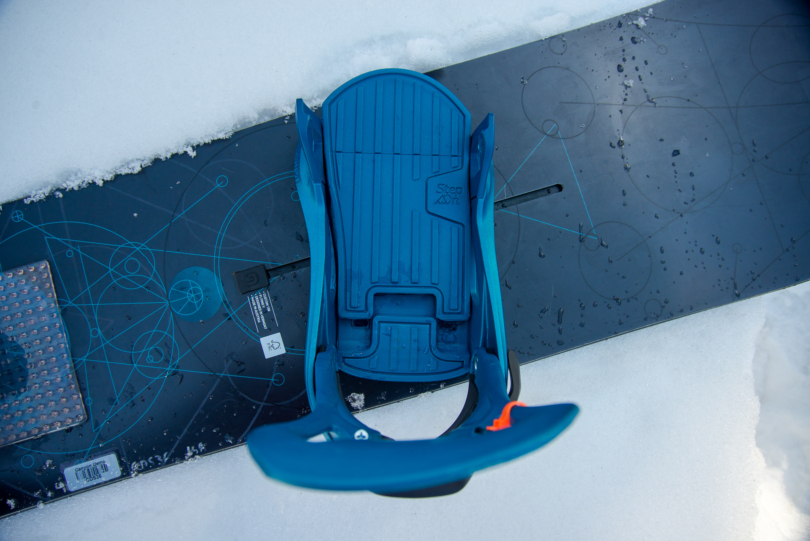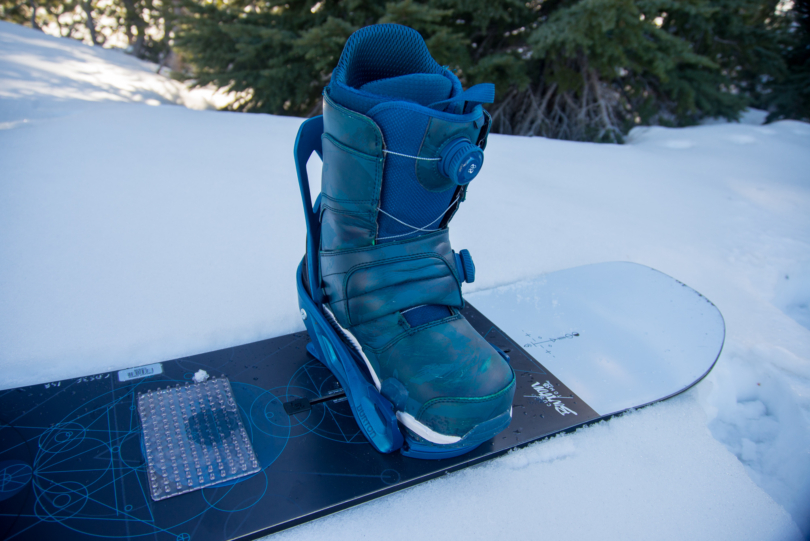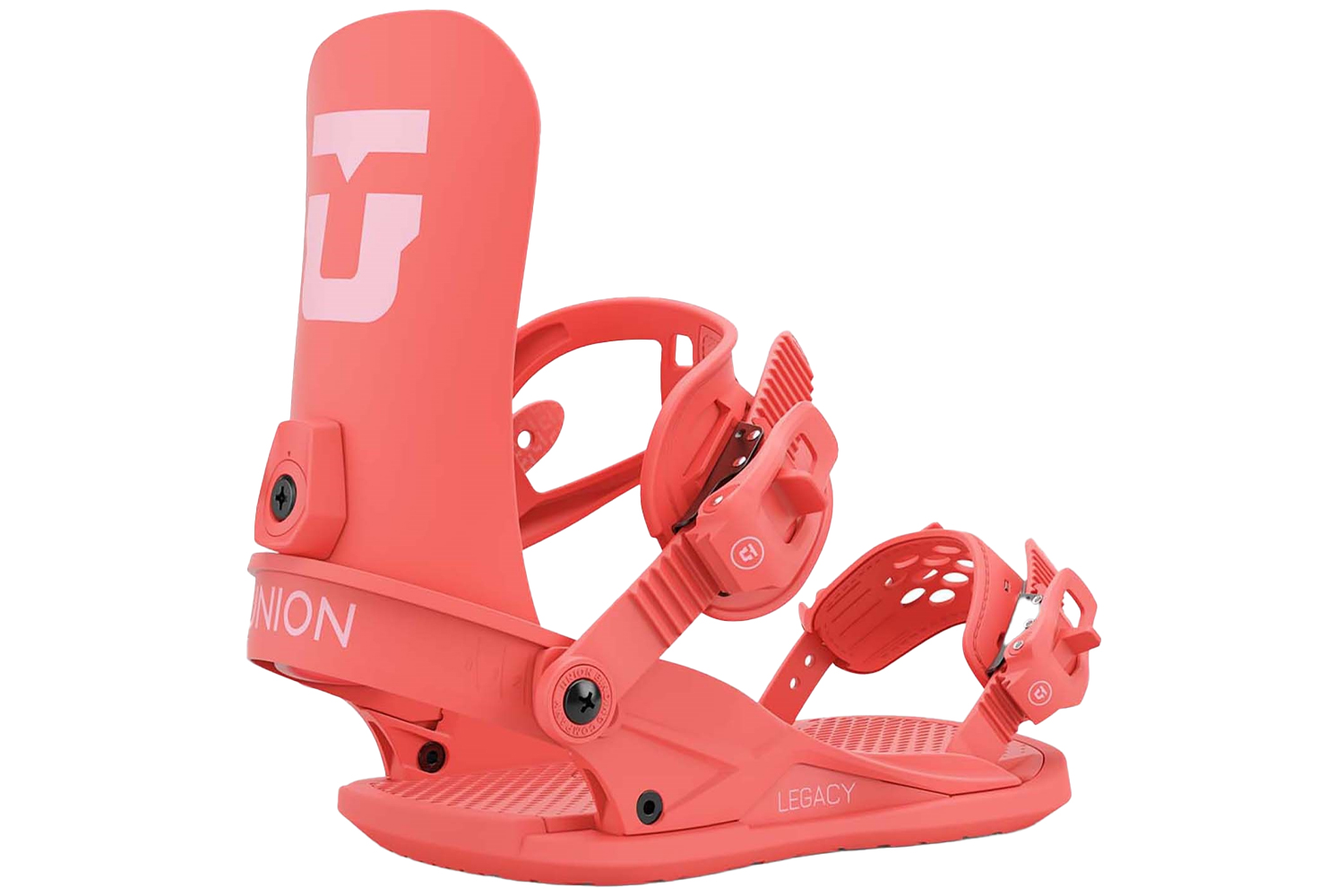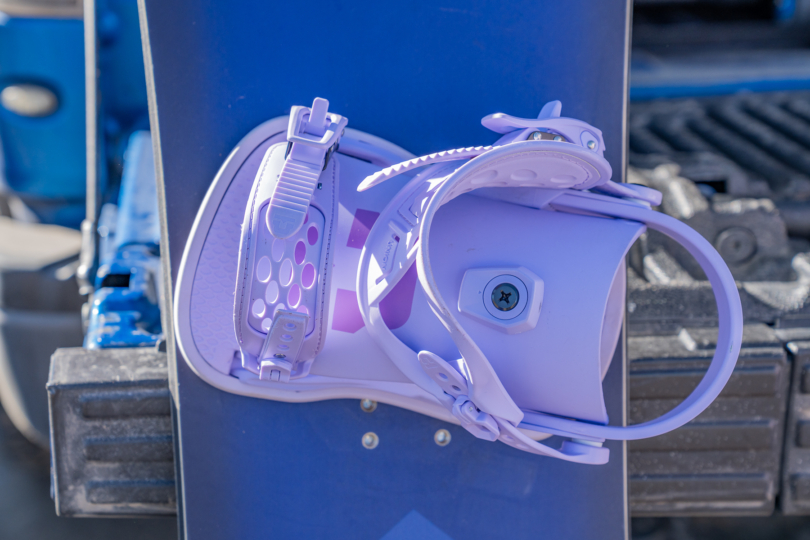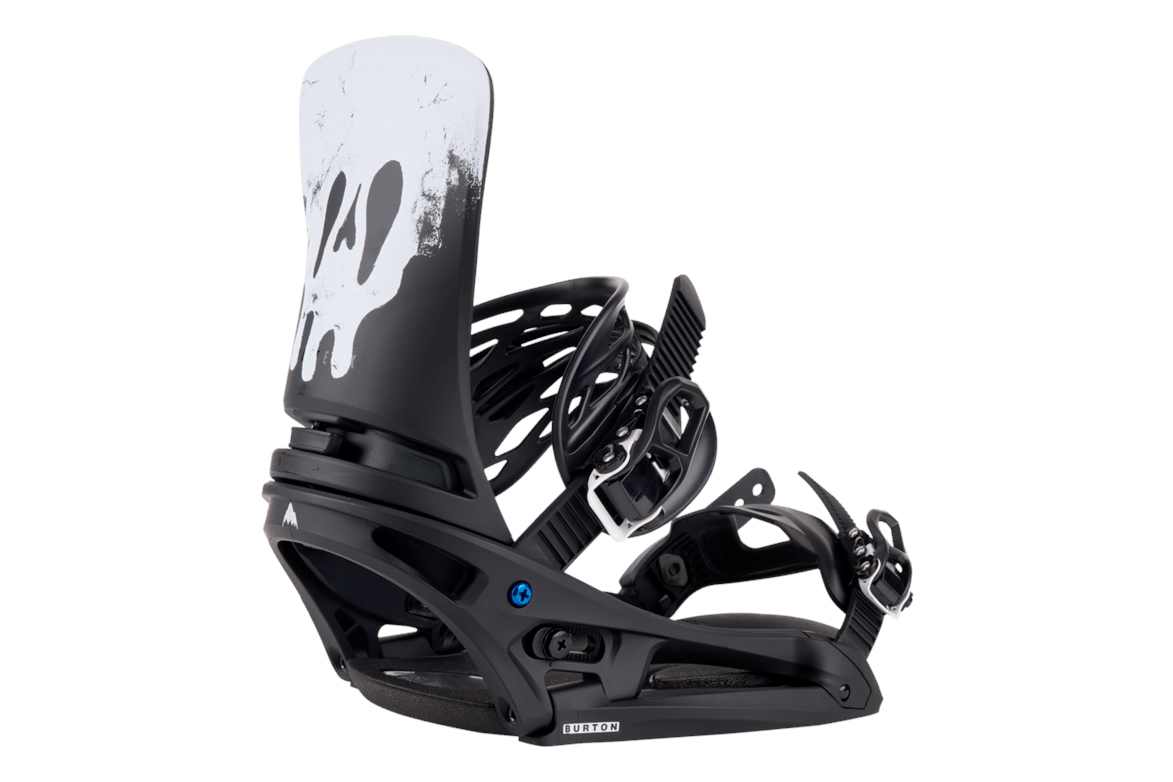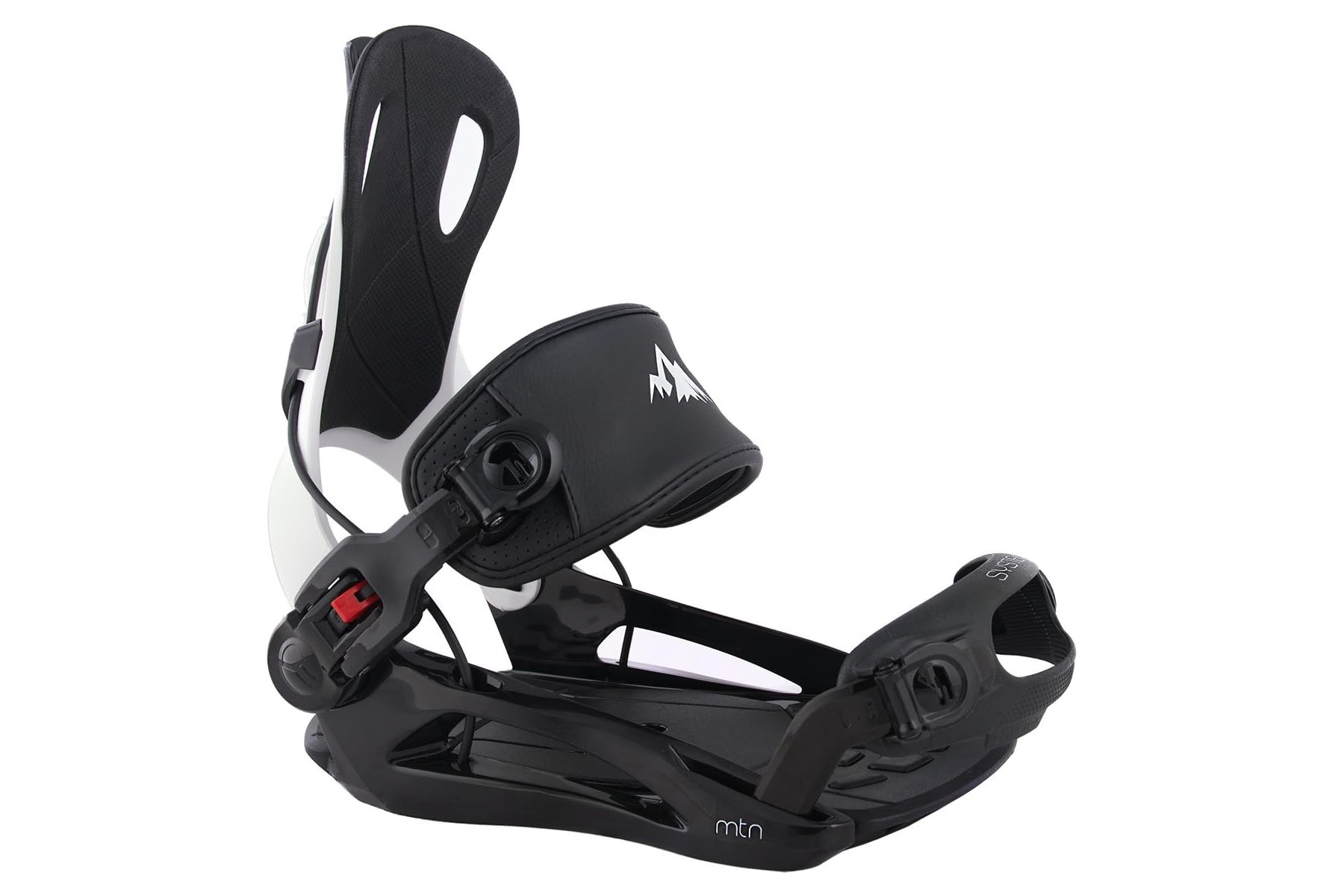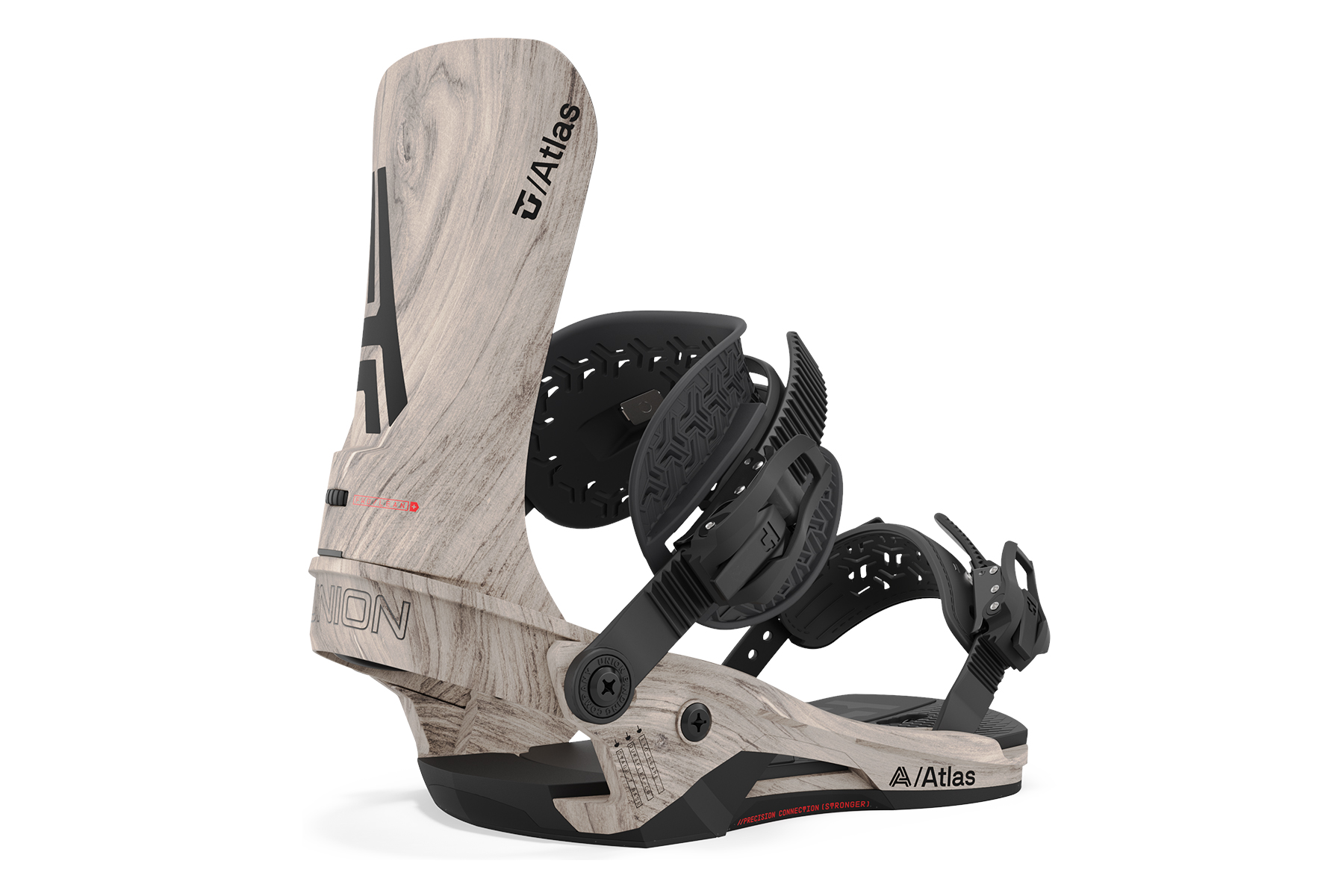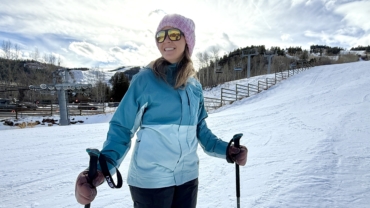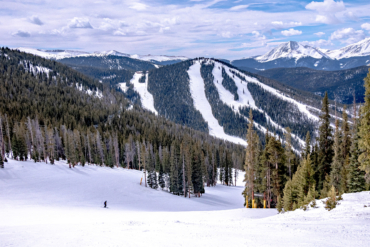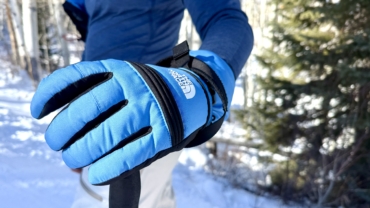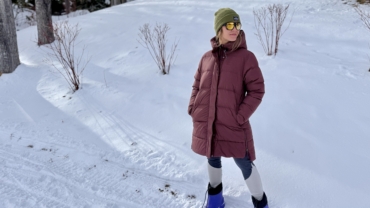Snowboard bindings lock you into your snowboard and, most importantly, the snow you shred. They shape how connected you feel, how smooth your turns are, and how easy it is to transfer from edge to edge.
Seemingly simple, bindings come in a wide variety of flex, shape, and construction. They range from rigid freeride and big-mountain designs to forgiving park-oriented options, with a few different entry and exit styles. You can choose between traditional straps, step-in, or step-on iterations.
Looking for a comfortable, malleable, all-around pair? Go for the Rome Women’s Katana or Rome Men’s Katana Pro. If you prefer a stiffer build, you might prefer the support of the Union Legacy. Otherwise, here are our top picks for the best snowboard bindings from the park to off-piste shredding.
Editor’s Note: We updated our Snowboard Bindings buyer’s guide on October 29, 2025, with new and field-tested designs including the award-winning Jones Aurora and Season Meld. We also adding detailed ratings to help you compare each pair of snowboard bindings to find the best set.
The Best Snowboard Bindings of 2025-2026
Rome Men’s Katana Pro
-
Versatility
9.0
-
Straps and Buckles
9.0
-
Boot Compatibility
9.5
-
Ease of Adjustability
9.0
- Style: Strap-in
- Flex: Medium to firm
Pros
- Lightweight, thanks to infused carbon
- Adjustability for perfect fitment
Cons
- Price
Season Meld
- Style: Strap-in
- Flex: 7/10
Pros
- Ladder release tab is easy to operate
- L fits US boot size 11.5
- Lower half of the price spectrum
Cons
- Not plush yet not stiff — might not be a match
- Baseplate padding is very difficult to unclip
Jones Mercury FASE Snowboard Binding
-
Versatility
7.0
-
Straps and Buckles
9.0
-
Boot Compatibility
9.0
-
Ease of Adjustability
9.0
- Style: Strap-in
- Flex: Medium-to-firm
Pros
- FASE Fast entry system
- Mid-stiff freeride binding for all conditions and terrain
- Lightweight and high-performance binding
Cons
- FASE comes with additional costs
- FASE system entry is not ideal in some terrain
- Not a beginner-friendly binding
Rome Women’s Katana
-
Versatility
9.0
-
Straps and Buckles
9.0
-
Boot Compatibility
9.5
-
Ease of Adjustability
9.0
- Style: Strap-in
- Flex: Medium
Pros
- Extremely comfortable with zero pressure points
- Easy-release toe and ankle straps fit flush around boot
- Lightweight
- Well built and durable
Cons
- Pricier choice
- Not the stiffest select if that’s your priority
K2 Path
-
Versatility
9.0
-
Straps and Buckles
9.0
-
Boot Compatibility
8.5
-
Ease of Adjustability
6.5
- Style: Strap-in
- Flex: Firm (9/10)
Pros
- Precise, supportive feel
- Toe strap is grippy and contours well around snowboard boots
- Ankle strap adjust via a ladder system (sans mounting holes and a screw)
Cons
- If you'd like a more forgiving, playful binding, look elsewhere
- Not as much lateral give as other designs
Jones Women’s Auora
- Style: Strap-in
- Flex: Medium
Pros
- Comfortable, flexible toe straps that hug boot well
- Ankle and toe strap hinge design lets ‘em swing out of the way
- Tool-free strap and highback adjustment
Cons
- No quick release notch on toe buckle — takes a split-second longer to unstrap
- If you're looking for a super soft or super stiff ride, browse other options
Women’s Burton Lexa X Re:Flex
-
Versatility
9.0
-
Straps and Buckles
9.0
-
Boot Compatibility
8.5
-
Ease of Adjustability
8.5
- Style: Strap-in
- Flex: Medium-to-Stiff
Pros
- Heel hammock locks in boot
- Double-take ladder has angled teeth on top and bottom of ratchet straps for increased smoothness
- Compatible with the channel, 4X4, and 4X2 systems
Cons
- Stiffer binding might not be everyone's jam
- Heel ratchet strap is a bit short, which slightly delays threading
- 3D Hinge Disc (not included) is needed for mounting on 3D systems
Other Favorite Snowboard Bindings We Clip Into
-
Versatility
8.0
-
Straps and Buckles
8.0
-
Boot Compatibility
7.7
-
Ease of Adjustability
8.0
- Style: Strap-in
- Flex: Moderate
Pros
- Tenacious
- Perfectly flush fit
- Supportive, comfortable highback
- Easy-to-lift baseplate cushion and simple strap adjustment
Cons
- New riders might prefer a softer binding
- Some like an even stiffer saddle
-
Versatility
7.0
-
Straps and Buckles
8.0
-
Boot Compatibility
8.0
-
Ease of Adjustability
8.0
- Style: Step-on
- Flex: Medium
Pros
- Quick
- Secure locking system
- Responsive highback
Cons
- Only compatible with Step On boots
-
Versatility
8.0
-
Straps and Buckles
7.9
-
Boot Compatibility
7.9
-
Ease of Adjustability
8.0
- Style: Strap-in
- Flex: Moderately Stiff
Pros
- Light and lean
- Lateral flex
- Longitudinal stiffness
- Stiffer than soft, if you dig that
Cons
- Some riders might prefer a softer, more forgiving design
-
Versatility
8.0
-
Straps and Buckles
8.0
-
Boot Compatibility
8.0
-
Ease of Adjustability
8.0
- Style: Strap-in
- Flex: Rigid
Pros
- All-mountain performance
Cons
- Only compatible with Burton’s Channel board mounting system
-
Versatility
8.9
-
Straps and Buckles
8.9
-
Boot Compatibility
8.5
-
Ease of Adjustability
8.5
- Style: Strap-in
- Flex: Medium/Rigid
Pros
- Versatile
- Comfortable
- Responsive in any terrain
Cons
- If you want a soft pair, look at other options
-
Versatility
7.0
-
Straps and Buckles
7.5
-
Boot Compatibility
8.5
-
Ease of Adjustability
8.0
- Style: Rear-entry step-in
- Flex: Medium
Pros
- Price
- Quick boot entry
Cons
- Takes some tweaking to get the straps set up initially
-
Versatility
8.5
-
Straps and Buckles
8.0
-
Boot Compatibility
8.0
-
Ease of Adjustability
8.0
- Style: Strap-in
- Flex: Rigid
Pros
- Extremely responsive
- Tool-free adjusting
Cons
- Pricier choice
Snowboard Bindings Comparison Chart
Scroll right to view all of the columns: Price, Style, Flex.
| Snowboard Binding | Price | Style | Flex |
|---|---|---|---|
| Rome Katana Pro | $450 | Strap-in | Moderately Stiff |
| Season Meld | $260 | Strap-in | Moderately Stiff |
| Jones Mercury FASE Snowboard Binding | $380 | Strap-in | Medium to firm |
| Rome Women’s Katana | $400 | Strap-in | Medium |
| K2 Path | $360 | Strap-in | Firm |
| Jones Women’s Auora | $380 | Strap-in | Medium |
| Women’s Burton Lexa X Re:Flex | $330 | Strap-in | Medium to stif |
| System MTN Rear-Entry Step In | $120 | Rear-entry step-in | Medium |
| Union Force | $280 | Strap-in | Moderately Stiff |
| Union Legacy | $260 | Strap-in | Moderately Stiff |
| Yes Conda | $280 | Strap-in | Moderate |
| Burton Step On | $330 | Step-on | Medium |
| Union Atlas | $350 | Strap-in | Stiffer |
| Burton Cartel X EST | $300 | Strap-in | Stiffer |
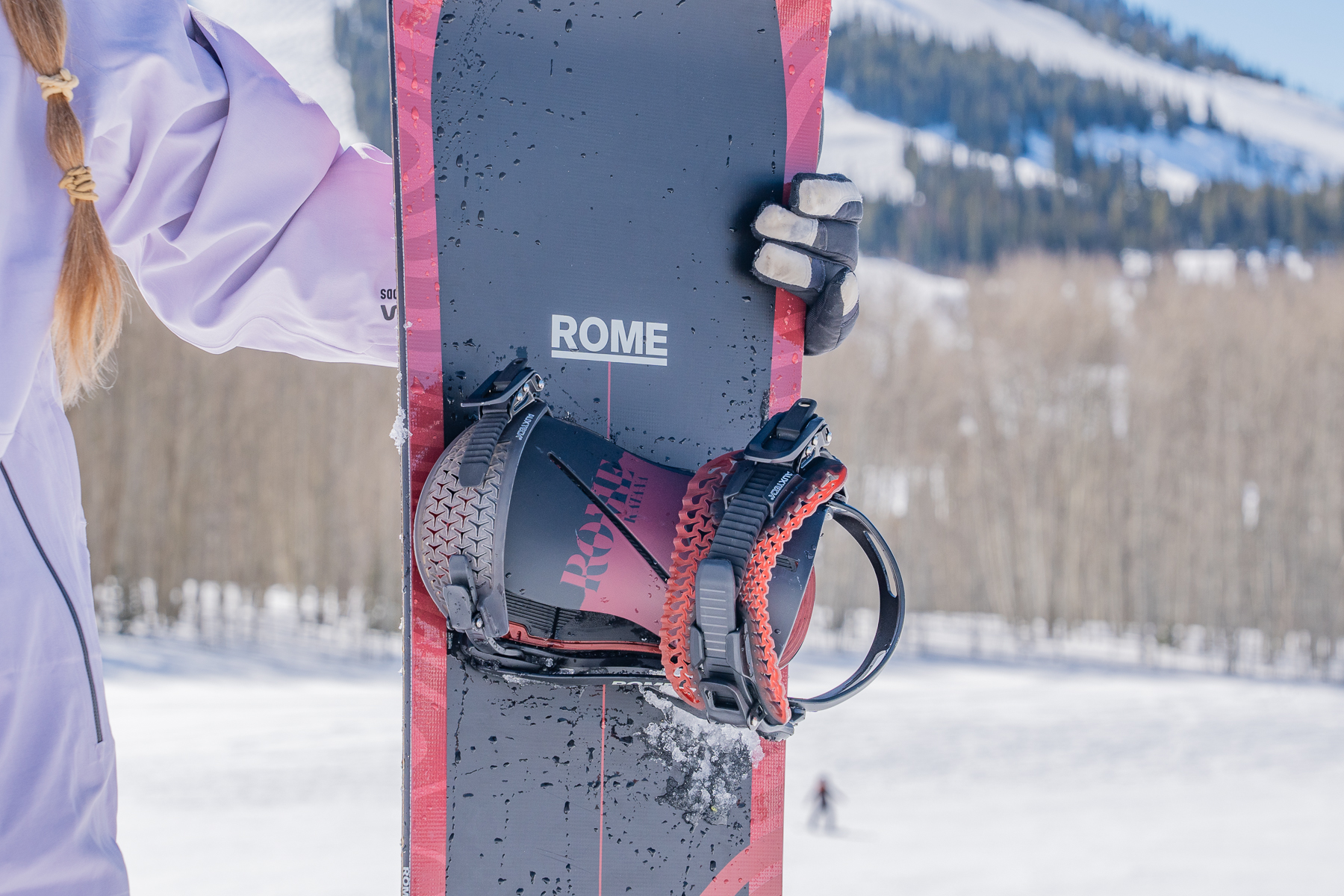
How We Tested Snowboard Bindings
Our Expert Testers
Leading the snowboard gear crew, Senior Editor Morgan Tilton specializes in snowsports and has been a snowboarder since 2002, when she learned to ride at her home ski area in Telluride, Colorado. While she grew up competing in slopestyle, Tilton enjoys backcountry and in-bounds days alike. In the 2024-2025 season, she tested snowboard bindings (on solid boards) for more than 126 hours, 688 miles, and 194,500 vertical feet. In early 2024, she has tested snowboard bindings for 135 hours across 38 days. She tested snowboard bindings for 104 hours across 34 days, in 2023. She’s also a former manager of the late TransWorld Snowboarding annual snowboard bindings test. (R.I.P. TWS.)
Contributing photographer and tester Eric Phillips is a formerly certified Level II PSIA-AASI instructor and big mountain pow surfer when he’s not at the resort or on splitboard tours.
Gear tester Austin Beck-Doss has been snowboarding since 2005. Growing up far from the mountains, trips to the slopes were a special once-a-year treat for Beck-Doss. After moving to Colorado in 2014, his repetitions increased dramatically. In recent years, he has logged lots of glorious days at various resorts in the Wasatch mountains of Utah. He’s also worked as an adaptive snowboard instructor with people with disabilities.
California-based GearJunkie Editor Billy Brown contributed to this guide when it was first scribed in 2020. Since then, the guide has been updated many times.
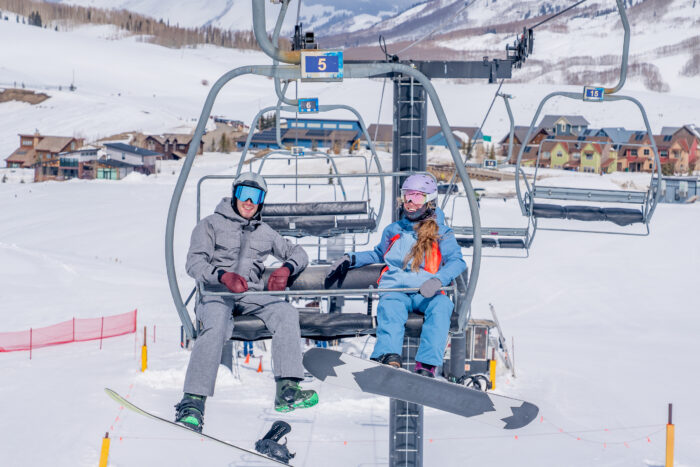
Our Testing Grounds
Beck-Doss is based in Wyoming, Phillips is based in Crested Butte, and Tilton typically tests bindings at Telluride Ski Resort and Crested Butte Mountain Resort.
The GearJunkie team meets for on-snow test weeks to grind out turns and swap notes, including two previous gatherings at Crested Butte Mountain Resort, which is known for its expert terrain.
Our Testing Process
While we test snowboard bindings, we consider the flex, highback shape and height, baseplate, strap ergonomics, ratchet and release system, materials, durability, ease of use, ease of installation and adjustment, snowboard compatibility, boot compatibility, and price.
We research the best options before pulling them into the field for tests including consideration of the most innovative, popular, and legacy bindings.
Our Snowboard Binding Rating System
To help riders find the best pair, we evaluate each binding based on four characteristics to measure its personality across conditions and terrain:
- Versatility examines the balance between responsiveness and playfulness. A well-balanced snowboard binding for all-mountain riding typically sits square with a medium flex that’s not too precise and powerful nor too forgiving. That said, excellent softer flex pairs can be a great choice for beginners and park riders while stiffer construction is great for freeride and carving.
- Straps and Buckles looks at the overall strap comfort, hold, and durability. A contoured strap that’s cushioned distributes pressure evenly. Smooth, durable ratchets make tightening and releasing the straps quicker and easier. We inspect how the toe and heel straps slide on and off, how they support the boot — are there pressure points and do the straps shift during descents — plus how easily the design sheds snow and ice.
- Boot Compatibility inspects how adaptable the toe and heel straps are to various boots. We also check to the overall size run.
- Ease of Adjustability scopes out how easy the settings of the straps and highback are to adjust. We look at how accessible the mounting disc is and how easy the stance angles are to change, as well as overall stance on the board, relative to the insert pattern. This element considers overall compatibility between the binding and various snowboards and insert patterns.
The Overall Rating is a halo digit that considers additional factors such as the price point, quality of materials, sustainability, aesthetic, and durability. It’s an overall impression after in-depth field testing and cross-comparison.
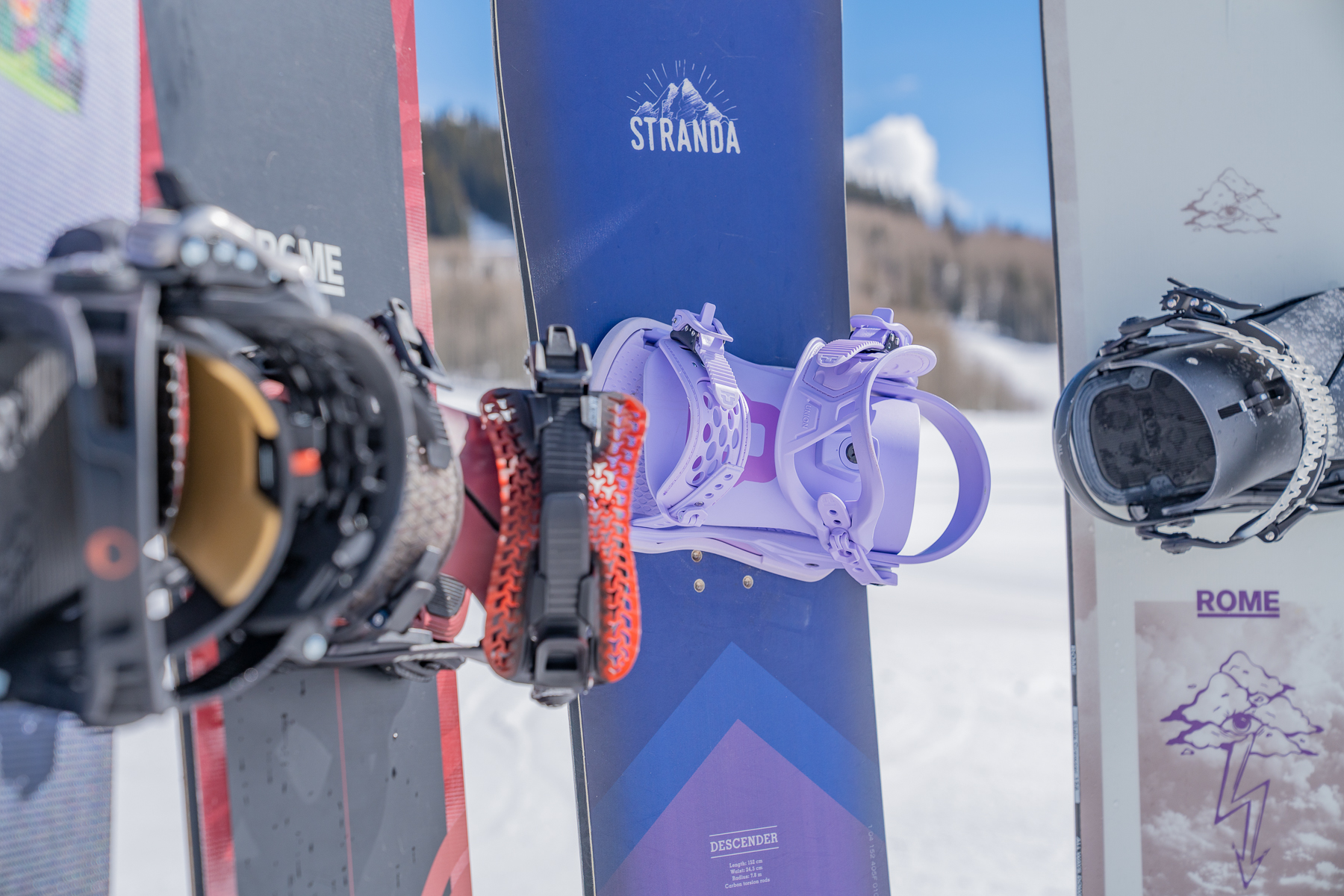
Buyers Guide: How to Choose Snowboard Bindings
Snowboard bindings are built to accommodate riding styles starting with freeriding, which consists mostly of surfing through powder or carving down groomed runs. Bindings that are ideal for freeriders are stiffer and more aggressive. This provides the quick and reliable response that carvers need to make fast turns on steep downhill slopes.
Freestyle and park riders are the snowboarders that you see bombing off kickers, sailing over tabletops, and grinding everything that you can slide on. Freestyle bindings tend to be more flexible to allow for tweaking grabs and for adjusting your balance on rails.
All-mountain riders do a little bit of everything — hitting the groomers, finding powder off-trail, and making a few park runs here and there. All-mountain bindings need to ride a delicate balance between flex and rigidity.
They need enough stiffness to provide control on steeps while maintaining enough flex to hit the park. All-mountain snowboarders should look for bindings that are in the medium range of flexibility.
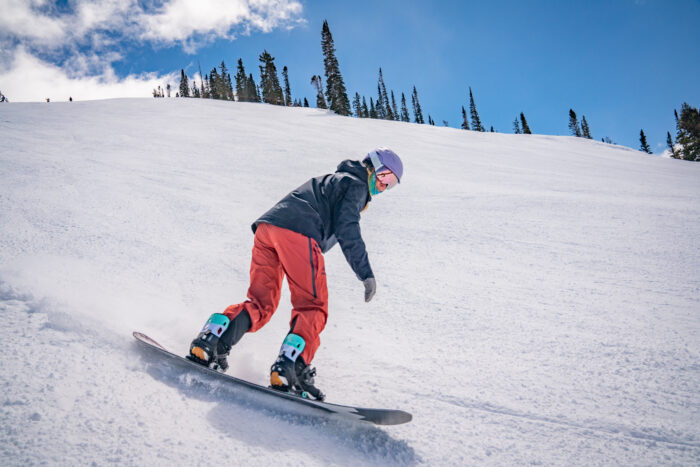
Flex: Snowboard Bindings
Flex of snowboard bindings refers to how rigid the construction is, particularly in the highback and the heel cup. This affects responsiveness, or how quickly the snowboard reacts to varying amounts of pressure you create as you carve.
A rigid flex provides stability and increases the binding’s response to your movements. This is ideal for high-speed runs and steep hills, where a quick turn can make a difference between holding your edge or catching it and cartwheeling down a hill.
More flexible bindings are ideal for park riding. Snowboarders who ride mostly in terrain parks value a more flexible binding profile, which allows for more mobility. This is ideal for tweaking grabs and for adjusting your center of gravity on rails.
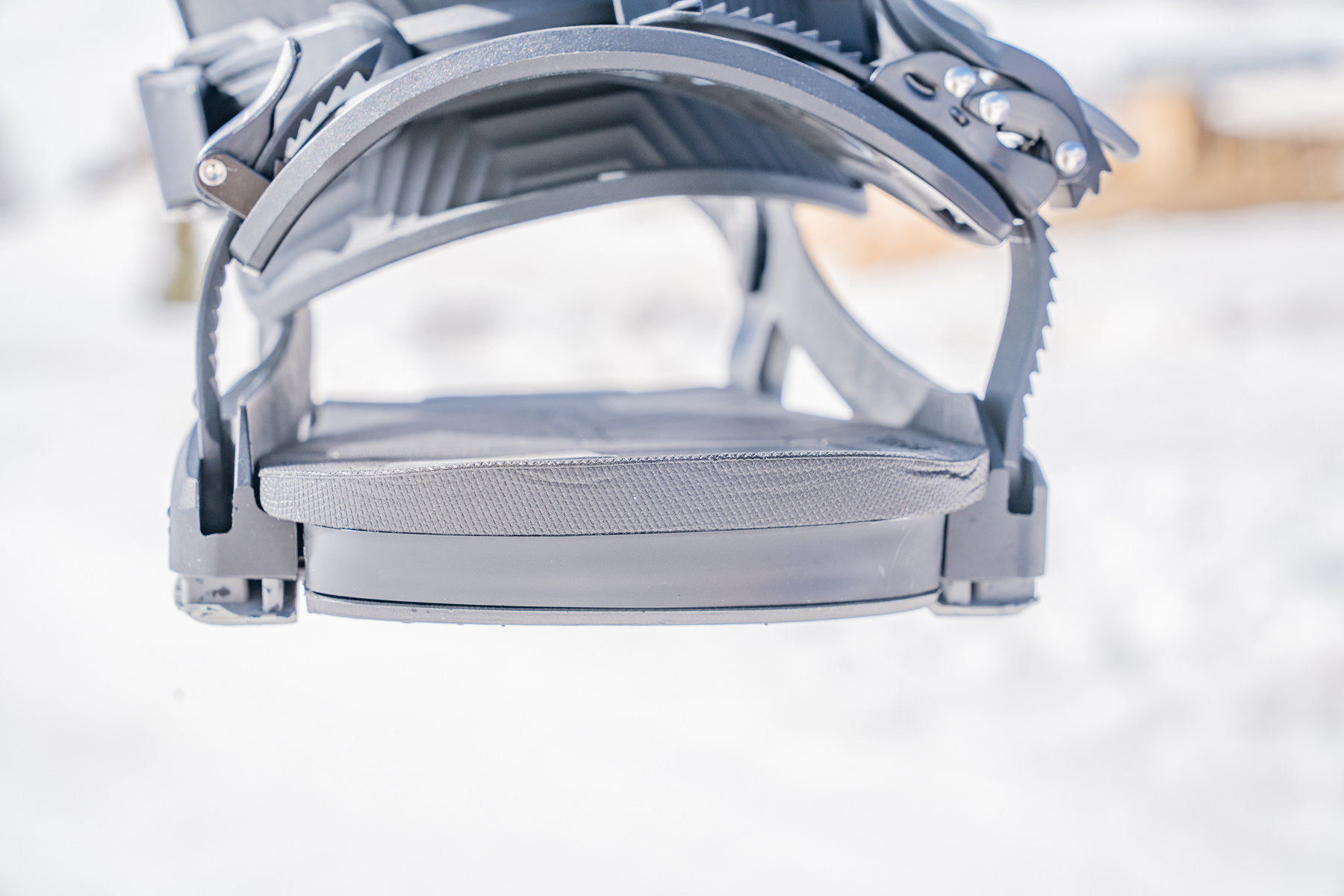
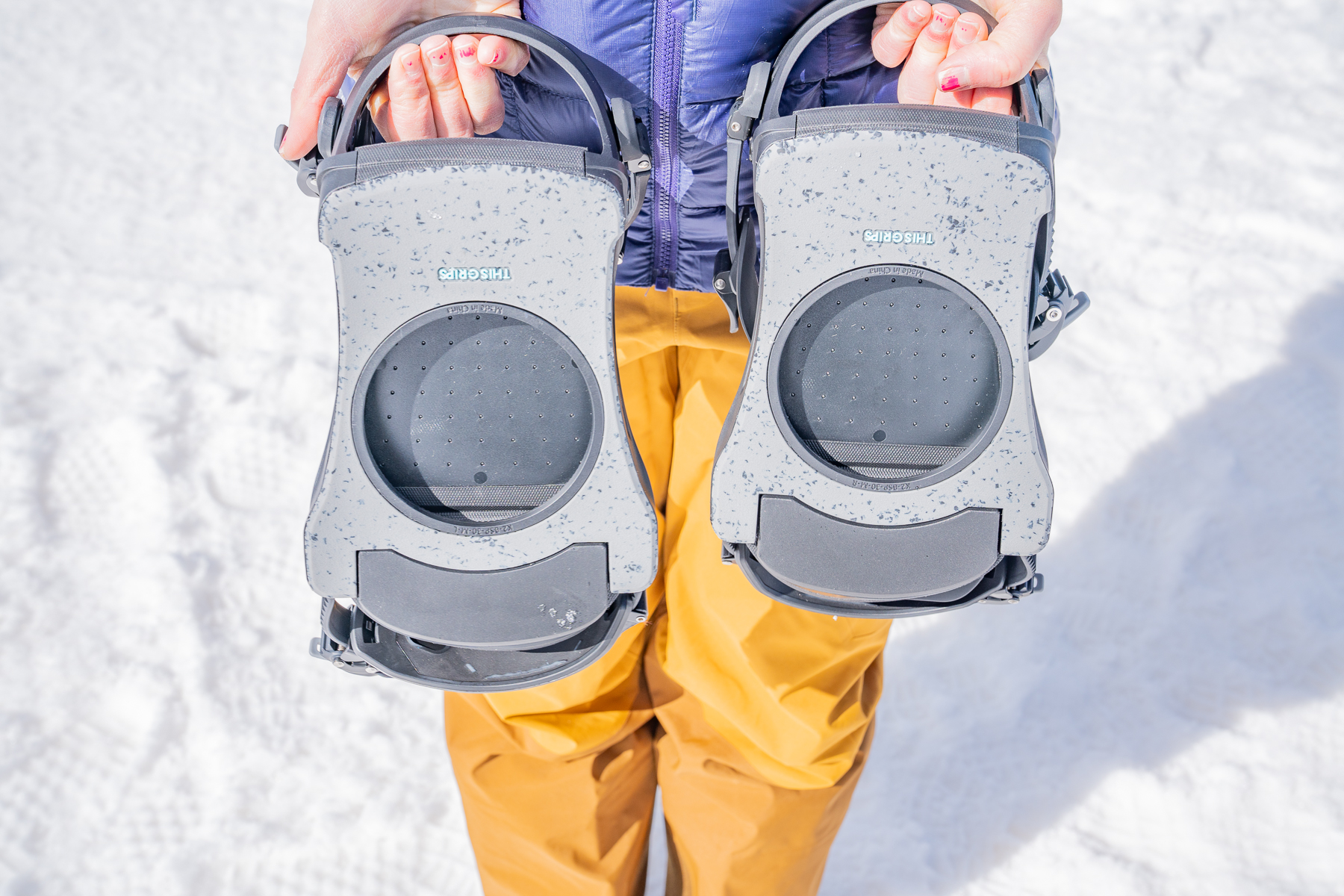
Baseplate
The baseplate is what attaches the binding to your board. It can be adjusted to vary the angle of a rider’s foot in relation to the board. This is based on the rider’s stance preference.
Some riders prefer a narrower stance or a neutral angle. However, others may want a wider stance or have their toes pointed slightly outward, based on their anatomy and style of riding.
Baseplates also generally feature some sort of damping technology that allows them to act as shock absorbers. This is usually made up of rubber or a composite. The damping helps absorb the shock of landings and minimizes vibration (also known as chatter) on icy or excessively bumpy terrain.
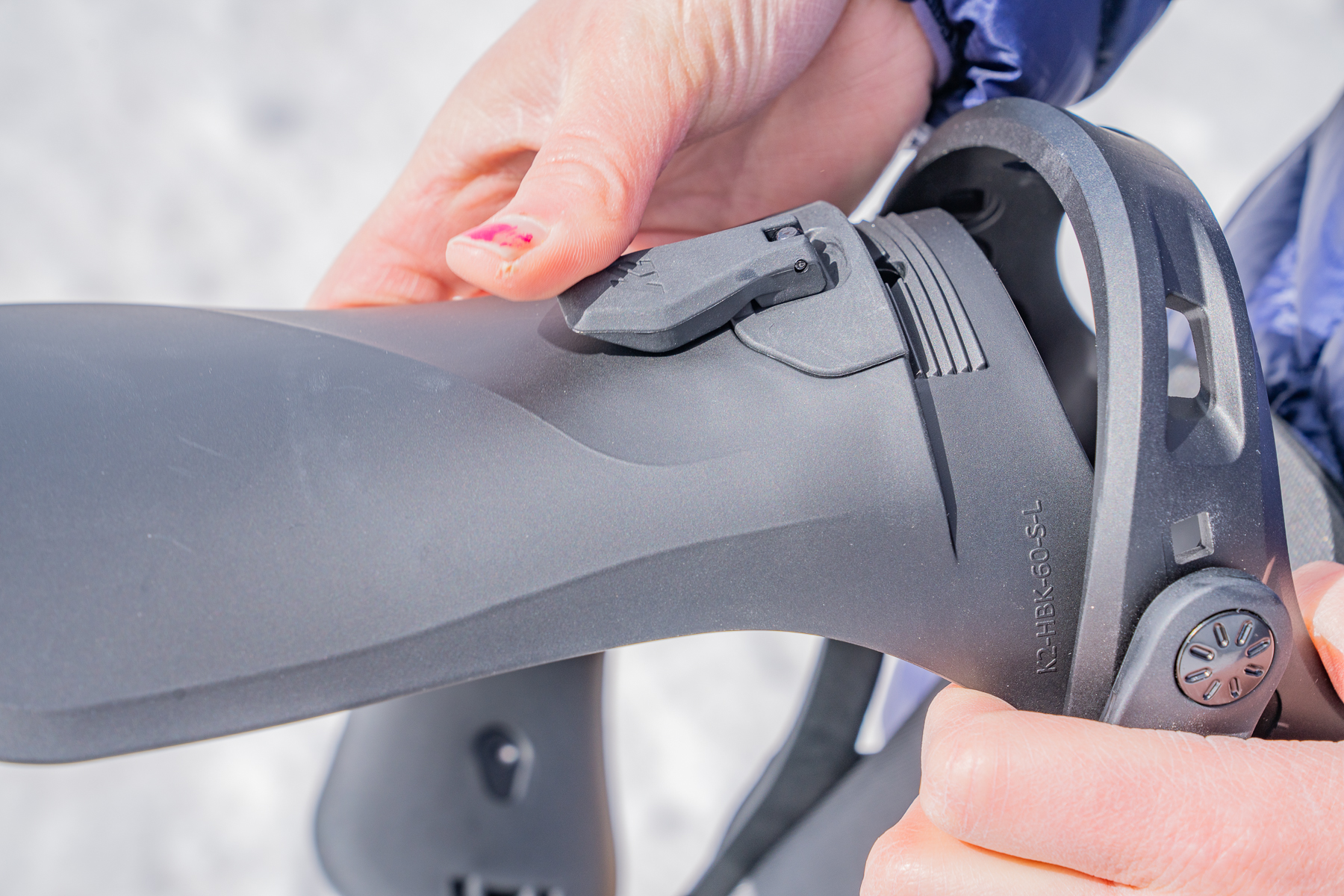
Highback
The highback is the wing that comes up the back of the binding, supporting the back of the leg. Highbacks are what give you control of your snowboard and add power when riding on your heel edge.
They vary in flexibility — more rigid highbacks increase the board’s response, while flexible highbacks are generally more comfortable.
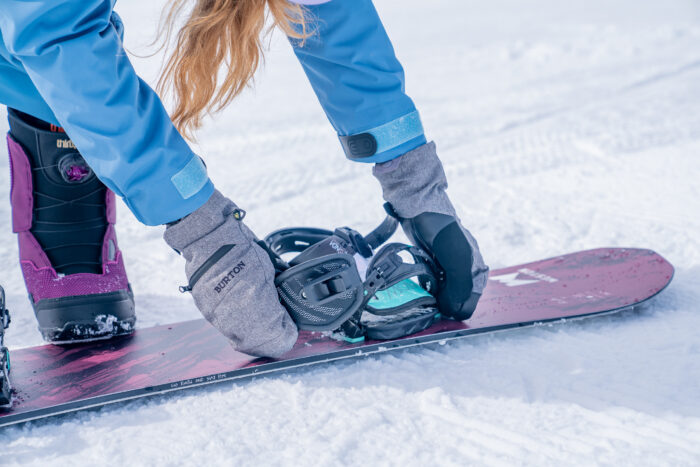
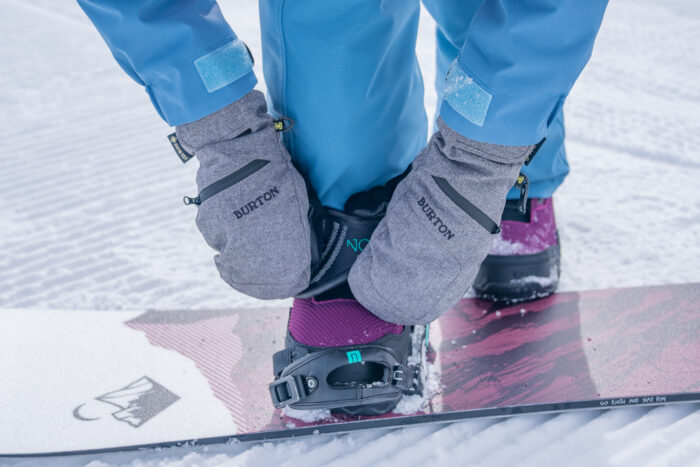
Two Straps: Ankle & Toe
Not only do straps secure your boots to your binding, but they also provide control and power when carving on your toe edge. Snowboard bindings have a larger ankle strap that wraps around the ankle and top of the foot, as well as a toe strap that wraps over the forefoot.
Some bindings’ toe straps go over the boot’s toecap, which can more effectively secure the boot in the binding. Straps are secured via ratcheting buckles, which allow for fast entry and exit. The ratchet levers also let you adjust your straps, tightening and loosening them as needed.
Snowboard Binding Entry Systems
Traditional Strap-In Bindings
This traditional setup has two straps — the ankle and toe — that secure the snowboard boots into the bindings. The straps are ratcheted down each time you put your boots in, and they need to be released to step out.
This style offers the most adjustable and customizable fit between the binding and boot. The bindings tend to be compatible with most boot styles, and these designs are also usually more cost-friendly.
But they’re slower to get into than rear-entry or step-on designs. The majority of our favorite snowboard bindings fall in this zone, including the Rome Men’s Katana Pro and Union Legacy.
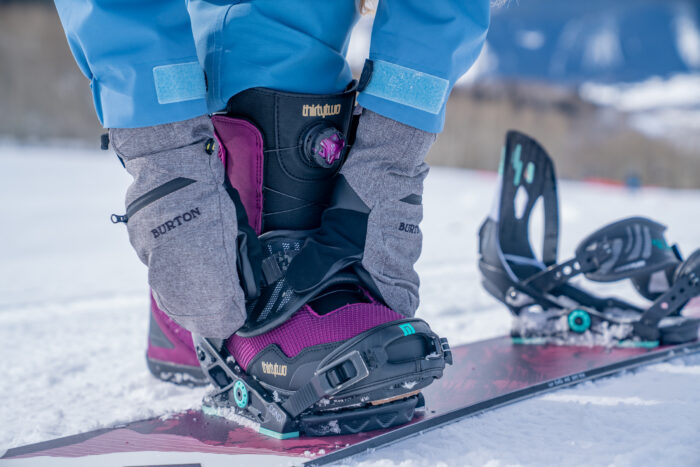
Rear-Entry (Speed-Entry) Step-In Bindings
With rear-entry snowboard bindings, the highback reclines backward, like on the fast-entry Jones Mercury FASE or System MTN Men’s Rear-Entry Step-In Bindings, so that you can slide your boot in from behind. When you step inside, the highback snaps and locks into place. The straps are all pre-set to your boot, so once you step down, you’re ready to slide.
The system is faster than traditional designs, and there’s a bit of strap adjustability. If you prefer adjustability throughout the day, traditional bindings might be a better choice. Rear-entry designs can also feel cumbersome when strapping back into your snowboard in deep snow or on a steep slope, like in hike-to terrain or sidecountry.
Step-On Bindings (Boot-to-Binding Interface)
For this design, you need specific snowboard boots that lock directly into the binding plate. There aren’t any straps. You step down, click in, and pull a lever to release. One of the most popular examples is the Burton Step On snowboard binding.
It’s a really quick system and hands-free, so it’s convenient on flat ground or at the ski area base before loading the lift. But it does require that you purchase system-specific snowboard boots. There’s less adjustability compared to other binding systems. They can also be pricier.
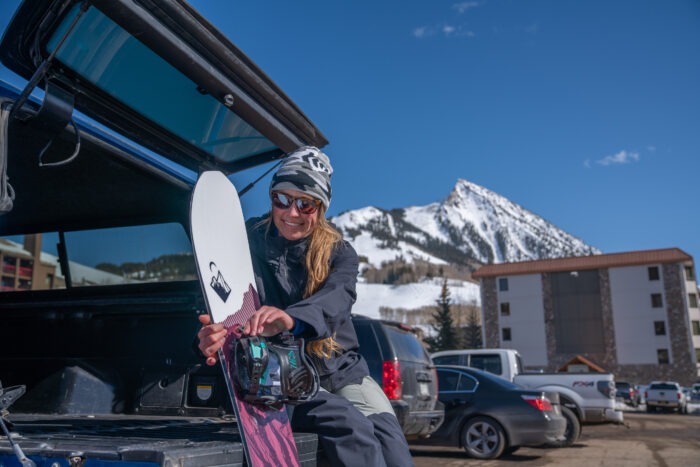
Snowboard and Snowboard Binding Compatibility
Most all-mountain snowboards are compatible with most snowboard bindings, but there are a few key factors to consider when rounding out your setup. If your snowboard is a stiff and aggressive hard-charger, you’ll probably want a stiffer set of binders to go with it.
When purchasing bindings, be sure that the size range is compatible with your board’s width. You don’t want a binding base that hangs off the edge of your snowboard.
Most importantly, make sure that the attachment pattern for your snowboard bindings is compatible with your snowboard. Several hole patterns are on the market:
- Channel system: Burton’s specific mounting system, where the bindings are mounted to and slide along a track
- 4×4: Two rows of holes that are 4 cm apart, plus each hole is 4 cm apart, and three holes per row
- 2×4: Two rows of holes that are 2 cm apart, plus each hole is 2 cm apart, and six holes per row
- 3-hole: The holes are in a triangular pattern, and three screws are used to mount the bindings
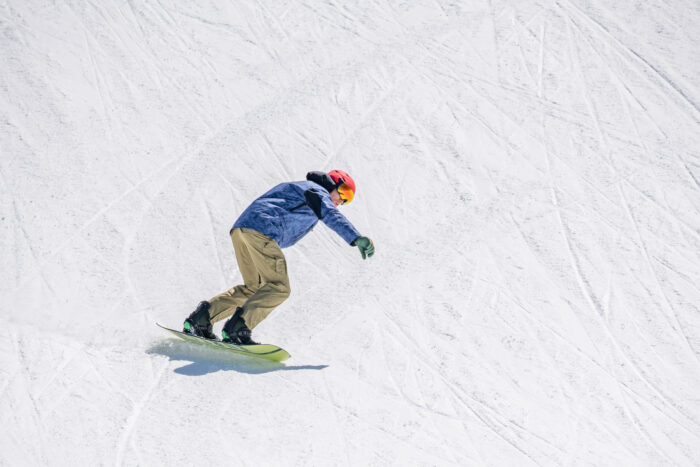
Sizing, Fit, & Women’s Specific Snowboard Bindings
Instead of the specific fits that you’ll find in shoes and snowboard boots, bindings tend to come in small, medium, and large sizes, with additional sizes for youths and women. Each size accommodates a range of snowboard boot sizes.
An important note is that the size run for unisex and men’s snowboard bindings is usually different than the size run for women’s specific bindings. The ankle and toe straps offer a wide range of adjustability, which lets you dial in your binding’s fit every time you step into it. Before buying, check your binding’s webpage to see which category your snowboard boot size fits in.
Also, if you wear a pair of snowboard boots that’s generally more streamlined, like Salomon, or beefier, like Vans, that’ll affect how the binding fits. If you’re on the cusp of a size range, we suggest taking your snowboard boots to your local retailer to see how they fit the snowboard binding. If that’s not possible, size up in the binding.
Despite the range of shoe sizes per category, bindings are designed to fit securely without feeling restrictive. You don’t want to allow any movement between the boot and the binding, as that results in a loss of control.

Price & Value
The price of bindings varies widely, from the least expensive sitting at under $100 to the higher end reaching into the $500-600 range.
Budget
Beginners may want to look for a lower-end binding while they learn — they can upgrade as they improve without taking a big bite out of their wallets. Check out a snowboard bindings review or two to find a good, low-cost binding that doesn’t sacrifice functionality.
For instance, the rear-entry step-in System MTN Men’s Rear-Entry Step-In Bindings ($120) offer an efficient, progressive design at under $200. To keep the price lower, no carbon or glass is woven into this construction, and the EVA padding is likely a tier lower and less durable. But these offer plenty of comfort and long-lasting durability for most riders.
Mid-Tier
Bindings such as the Union Legacy Women’s Snowboard Bindings ($260) are made with stiffer materials for a more responsive feel that some experienced riders tend to prefer. The flex is intricate, too, in that there’s longitudinal rigidity but a forgiving feel from side to side.
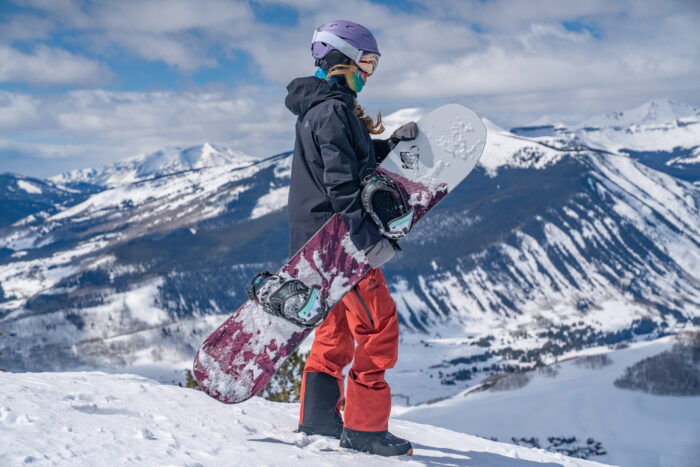
Premium
Usually, the cost comes with more durability and responsiveness, as well as more sport-specific features like aggressively angled highbacks for big-mountain riding.
If you know what style of riding you prefer, it can be worth it to opt for a higher-end binding that will accommodate your riding style. Bindings like the Rome Women’s Katana and Rome Men’s Katana Pro ($400-450) boast an innovative design — like the asymmetrical heel skeleton and the woven straps — and are made with very lightweight, tenacious materials that are extremely comfortable and form-fitting to whatever boots they come across.
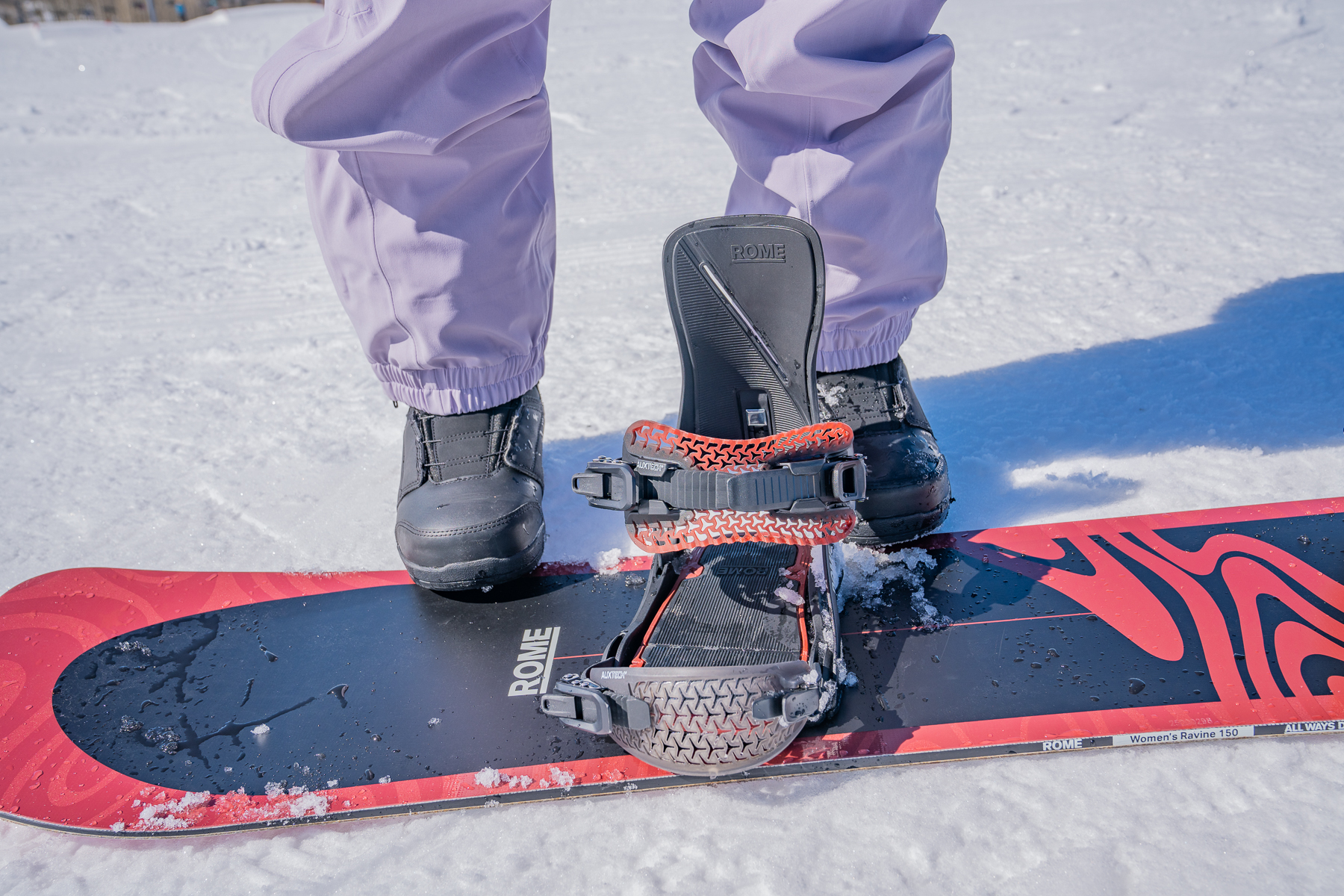
Frequently Asked Questions
Professional snowboarders tend to use bindings that are dialed into their personal style. They often use different board and binding setups to fit where and how they plan to ride on any given trip.
Freeriding snowboarders tend to use bindings with less flex, as the increased rigidity provides better edge-to-edge responsiveness during hard-charging lines and high-speed carves.
Freestyle riders usually use bindings with more flex. The added mobility provides the freedom to tweak grabs and to adjust their center of gravity when grinding rails and boxes.
All-mountain riders usually use all-mountain bindings with a medium flex. They need a binding that will provide the responsiveness required for reliable carving but with the flexibility to hit a kicker or grind the occasional rail.
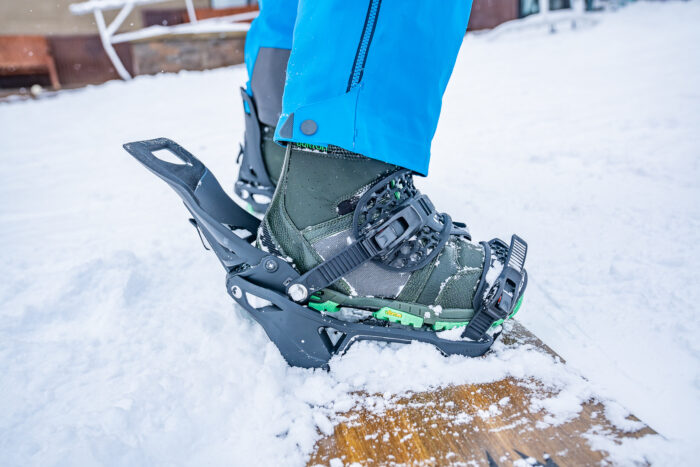
When learning to snowboard, simplicity is key. Go with a strap-in binding rather than a step-in binding when you start out.
The highbacks that come with strap-in bindings will make the board more responsive. This helps train riders to carve and develop trust in the board and binding connection.
Less expensive bindings are great for beginners as well. Binding preference is specific to the user, and a cheaper binding will be easier to replace as riders improve and start learning what bindings will better suit their preferred riding style.

Most snowboard bindings are universal, but not all. Some bindings are made to work specifically with certain brands. For instance, many Burton bindings are made to work primarily with Burton snowboards, so they come with multiple baseplates for use with other brands.
The good news is that any bindings that will only work with one type of board will note this in the technical specs section on the website. If you’re considering a set of bindings, be sure to check online that its baseplate is designed to work with the board you’re planning to use.
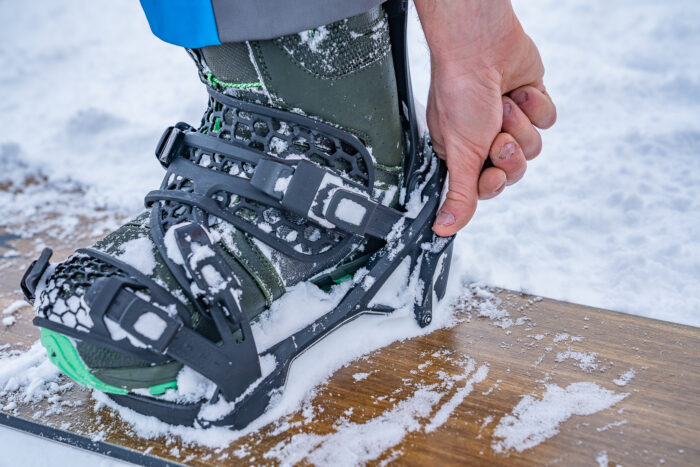
Thanks to the strapping system, strap-in bindings will fit a wide range of snowboard boots. The sizing (XS-XL) refers to the length of a boot sole, not the thickness of the boot, so if you are considering a binding size, the only thing you really must worry about is whether the length of the sole will work.
Step-on bindings attach to the bottom of boots with soles that have anchor points designed to lock into that specific binding. If you’re considering a pair of step-on bindings, make sure that you have a pair of boots that are made to work with that binding.

You want your boot to be as secure as possible without feeling uncomfortable. The boots should not move around in the bindings at all. The movement you provide by leaning and applying pressure to different parts of the binding is what steers and controls the board, so any slippage between the boot and binding will result in a loss of control.
However, the binding straps should not be so tight that they cause pinching or an uncomfortable amount of pressure. You don’t want to come out of your first run wanting to unstrap as soon as possible.
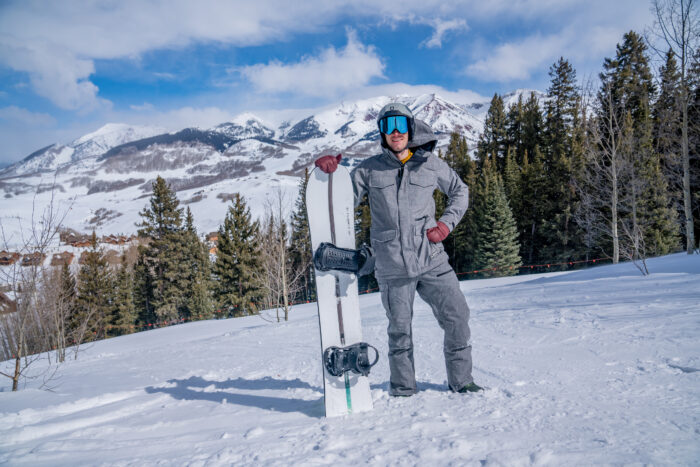
The most noticeable difference between step-in and strap-in bindings is that strap-in bindings use two straps to hold boots in. To add more nuance, step-in bindings are different from step-on bindings, but both eliminate traditional ankle and toe straps.
Step-in bindings let you slide your boot inside without releasing the straps. Instead, the highback hinges backward. When the boot slides in, the highback shifts vertical, which engages a locking mechanism to keep the boot in place. The system doesn’t require specialized boots like step-on systems.
Step-on bindings secure the boots via heel and toe cleats on the outsole of the boot that connect it to the baseplate. The setups usually require a specialized boot that’s made to be compatible with the binding. Step-on bindings provide fast entry and exit compared to a traditional strap system, but the lack of straps (and in some cases, highbacks) has been known to sacrifice control.

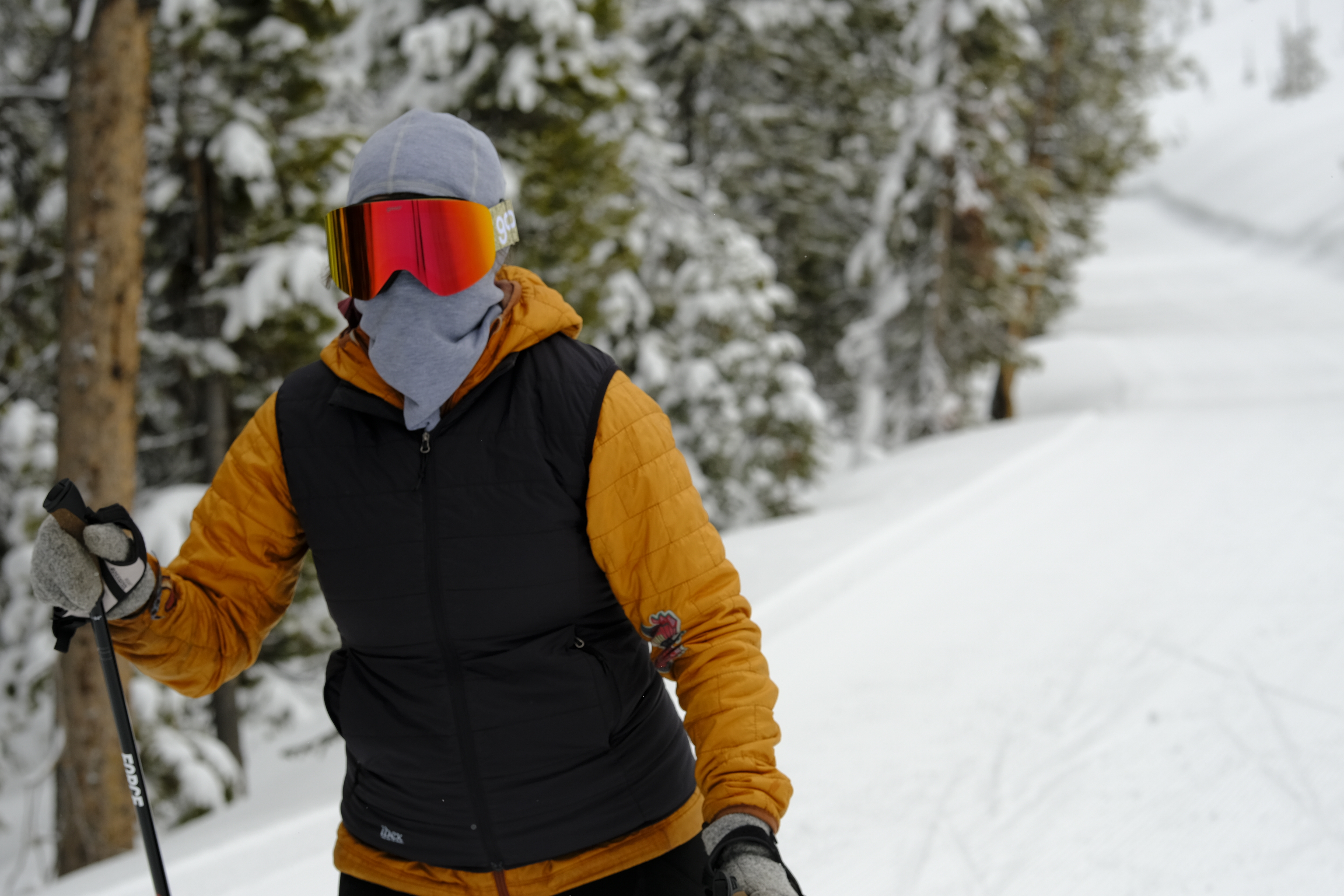
The Best Face Coverings for Skiing & Snowboarding of 2025-2026
We tested the best face coverings for skiing and snowboarding from Turtle Fur, Buff, REI, Smartwool, and more to help you find the best option for your needs and budget.
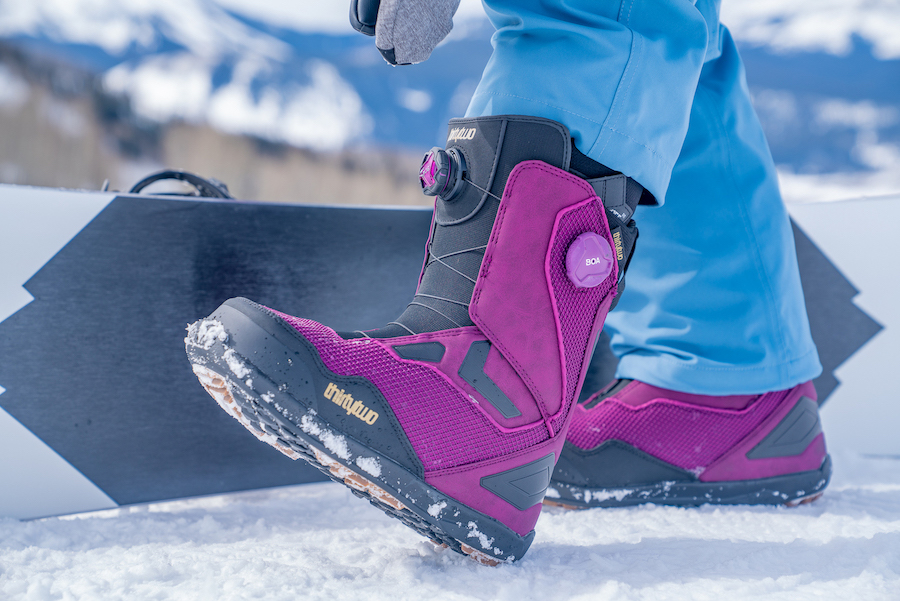
The Best Snowboard Boots of 2025-2026
We tested all-mountain and freestyle snowboard boots for the resort and backcountry to find the best options from Burton, Vans, K2, and more.
